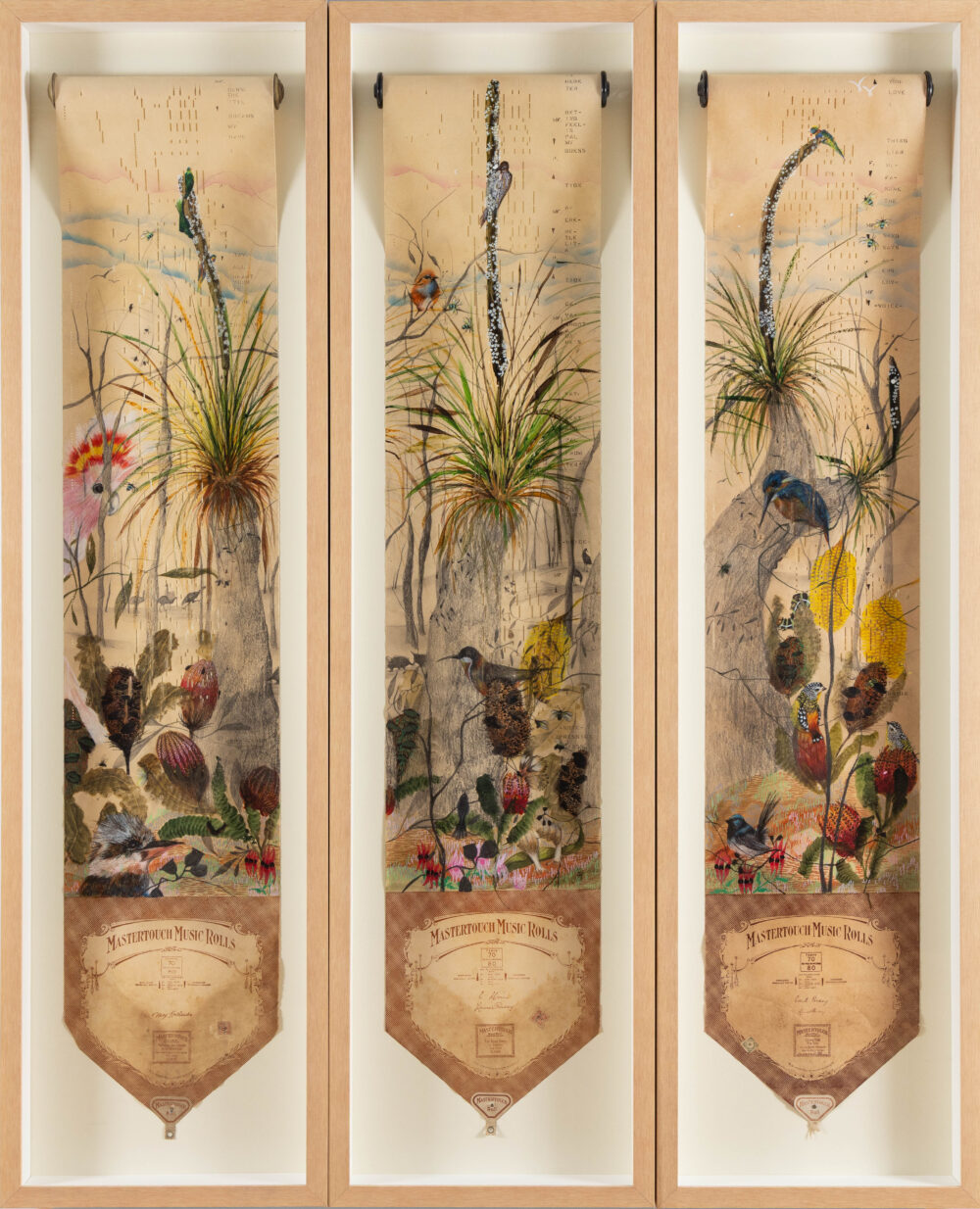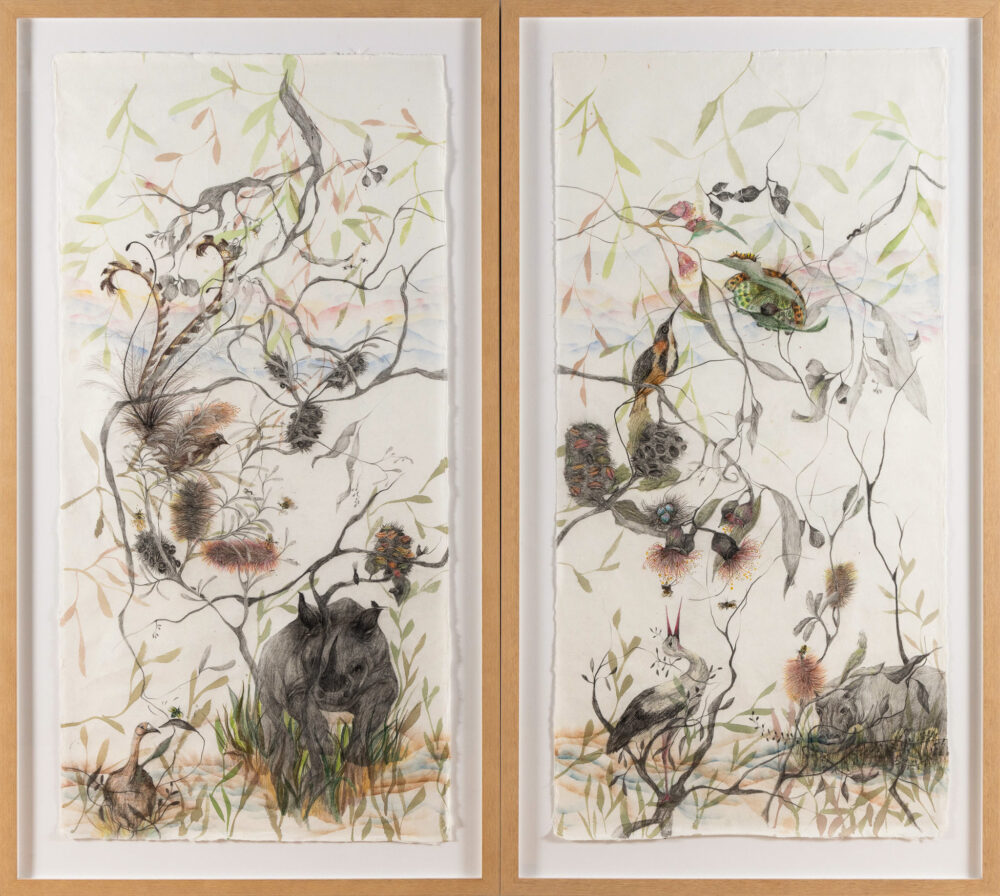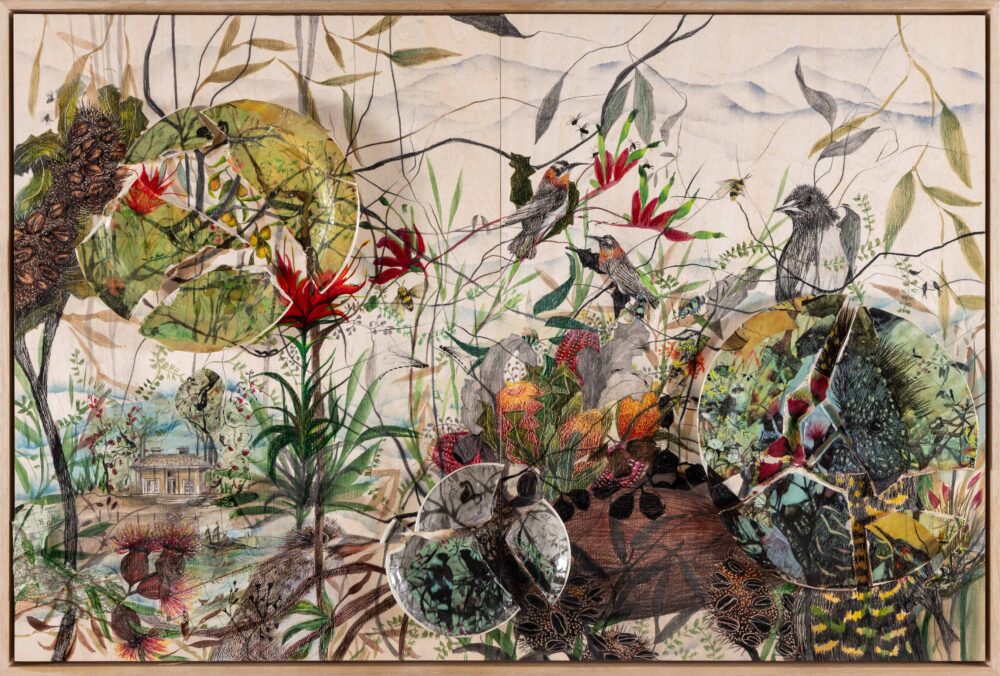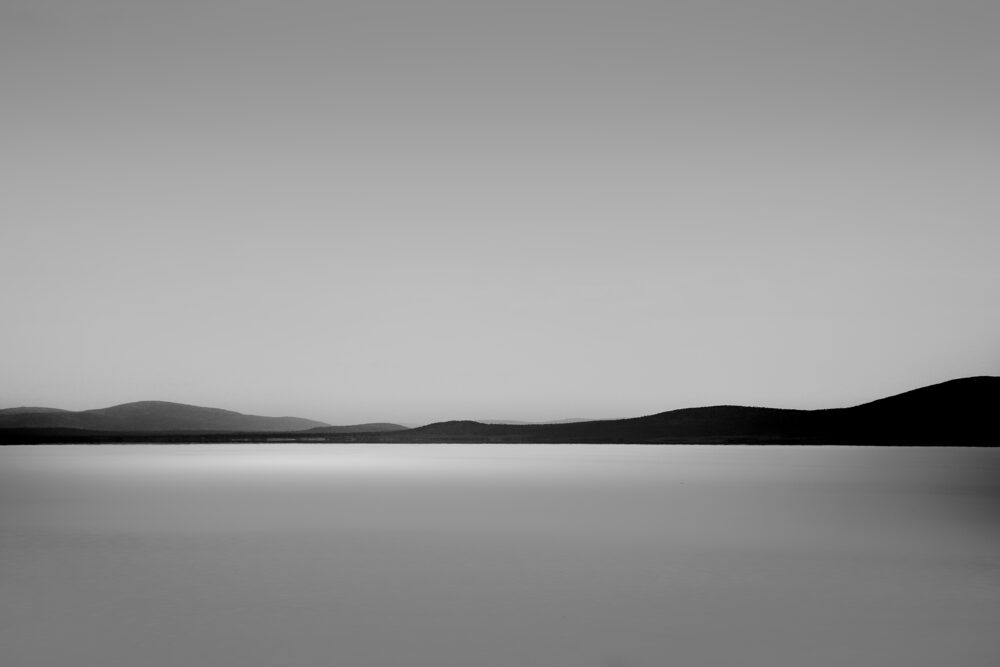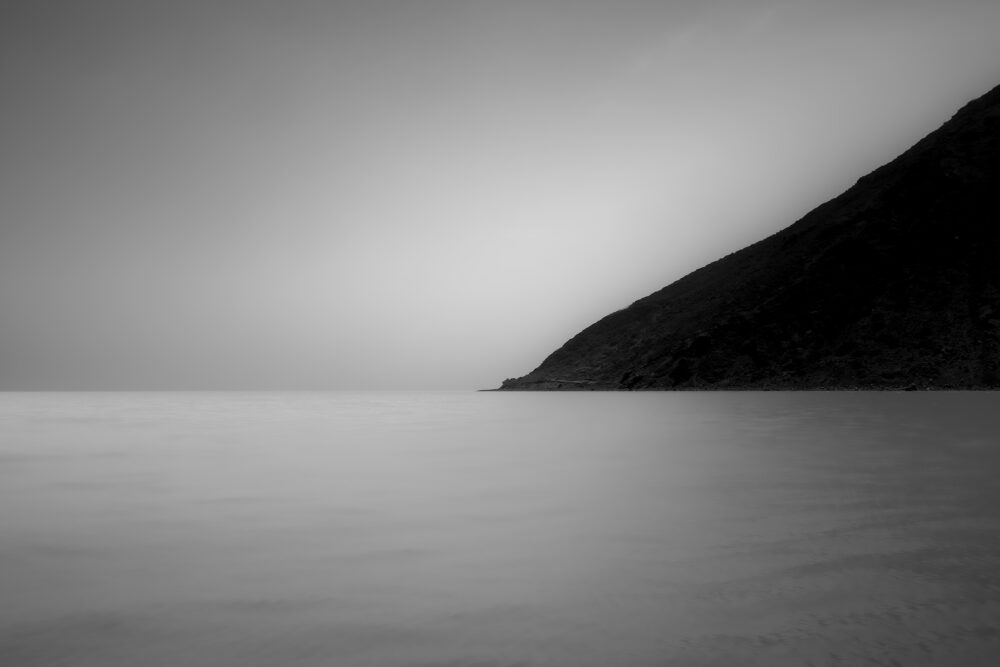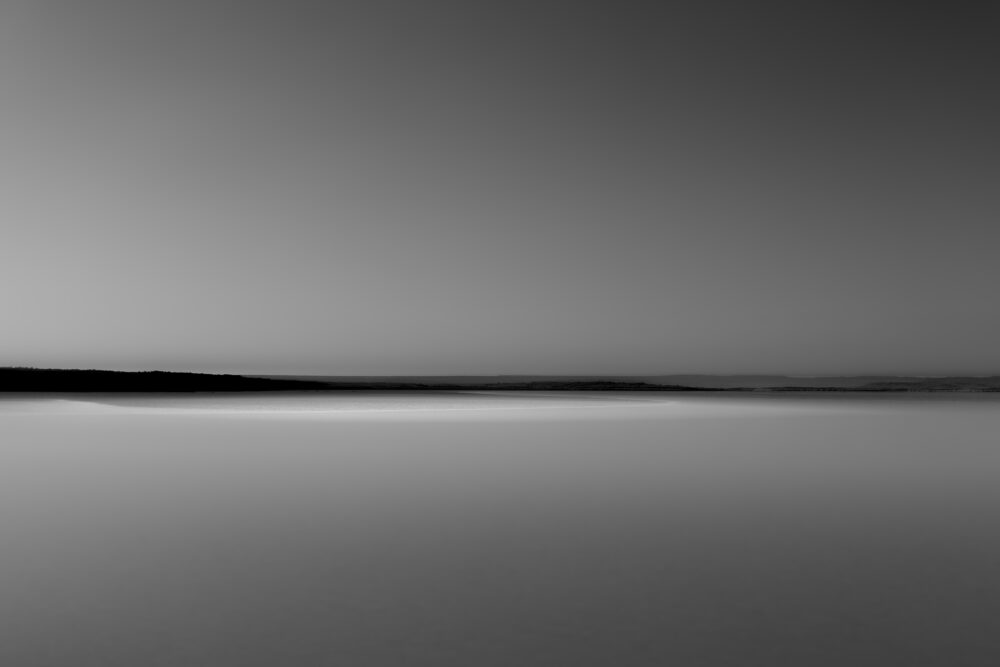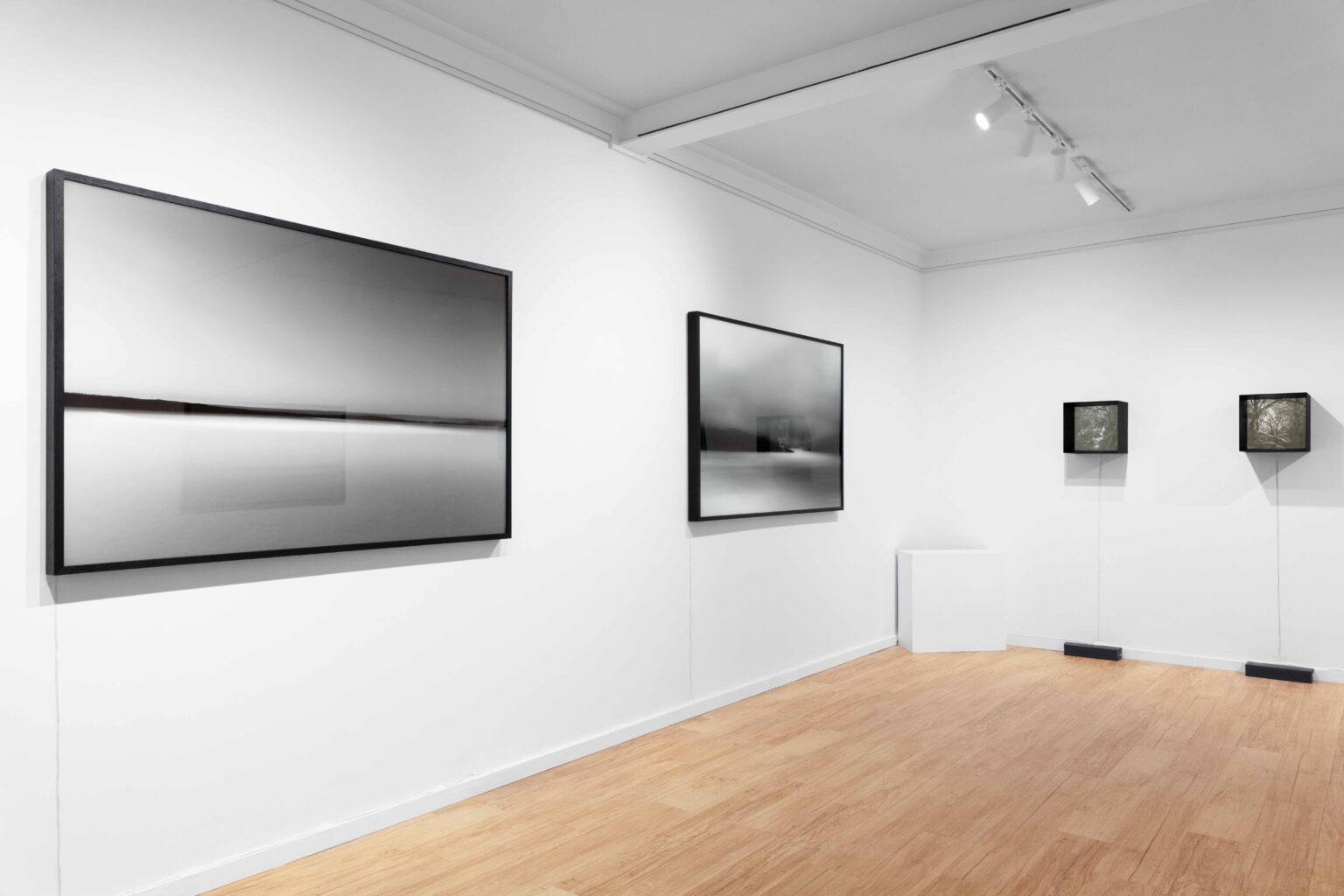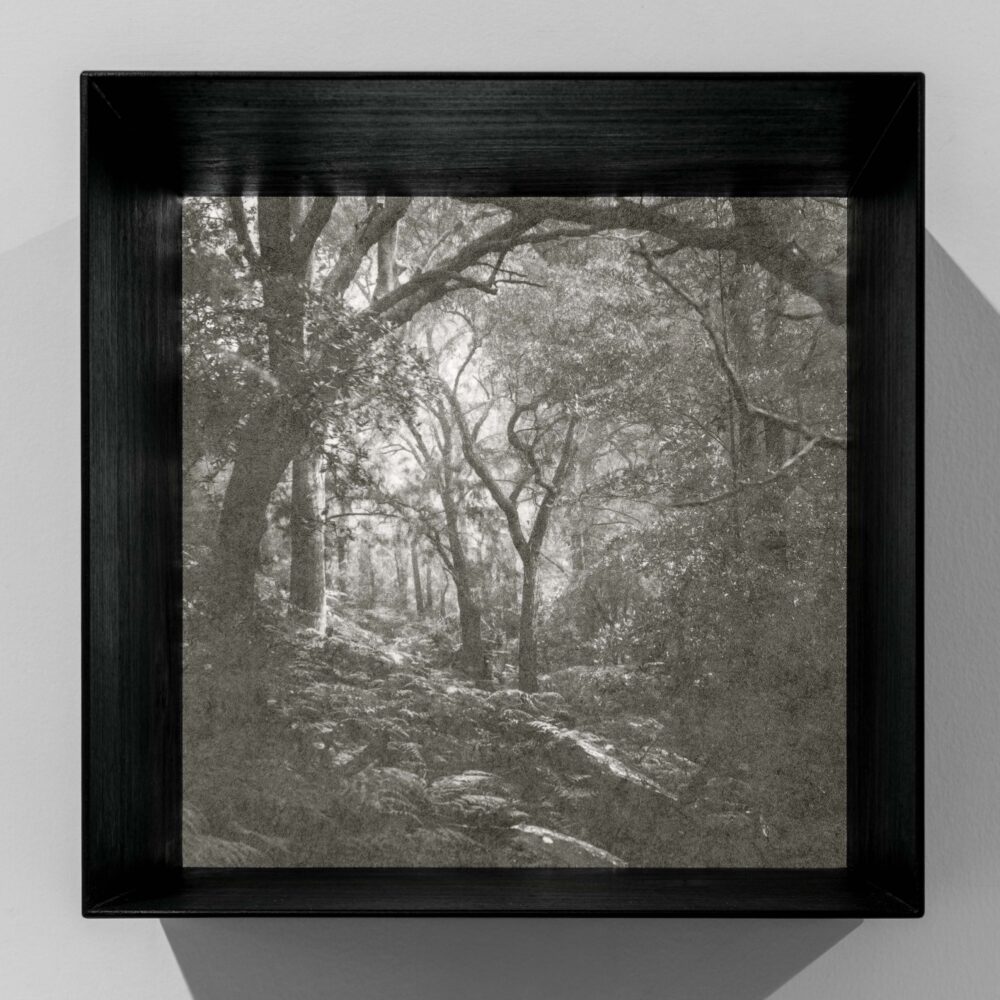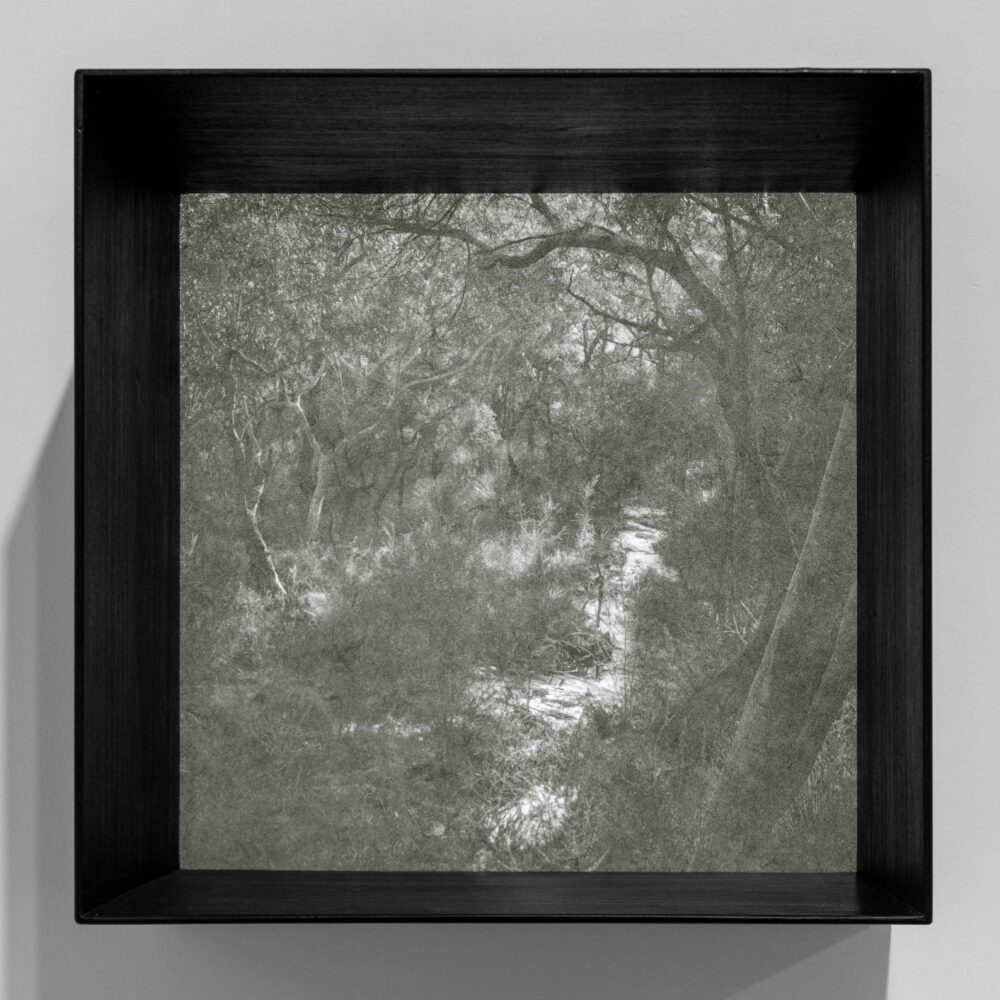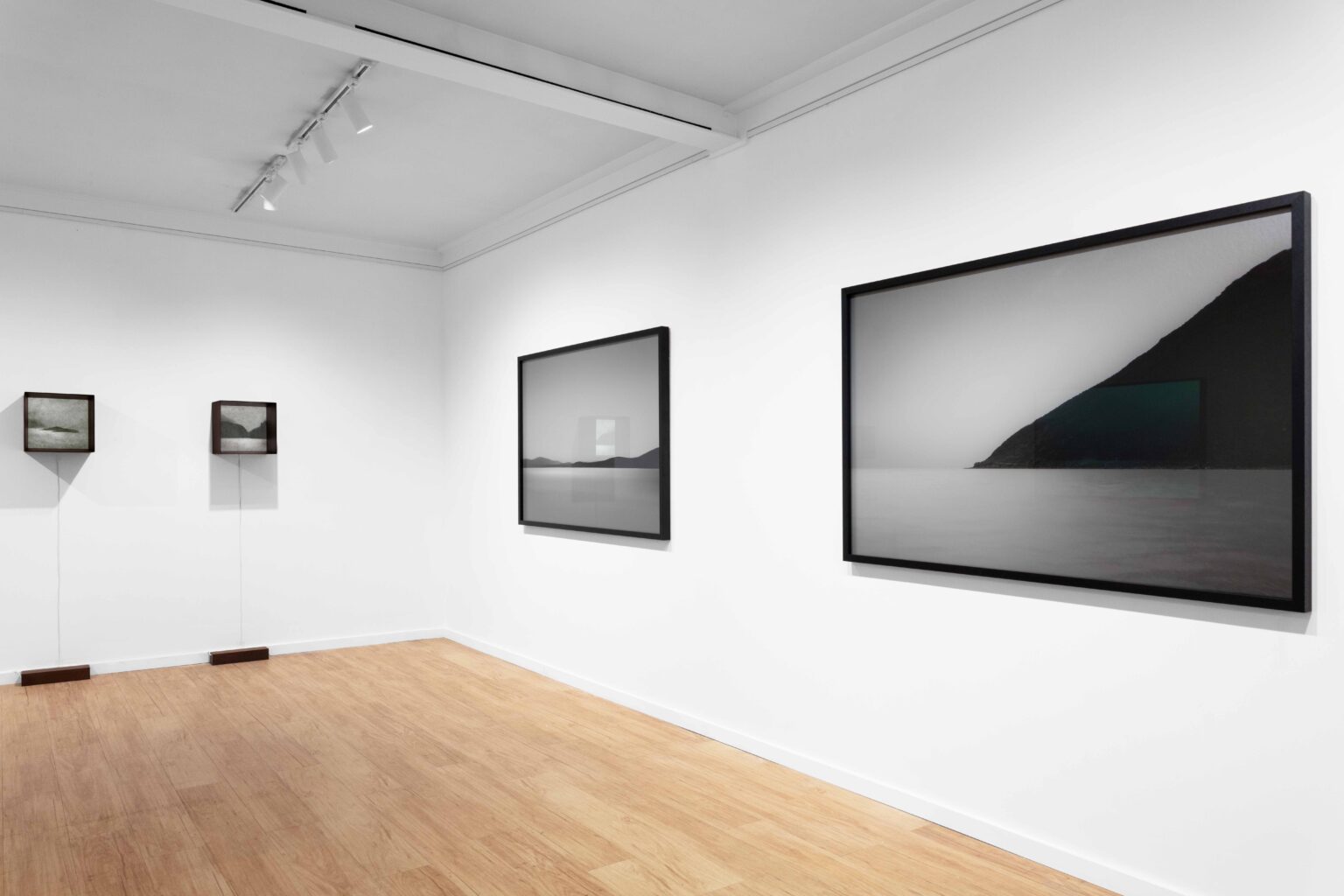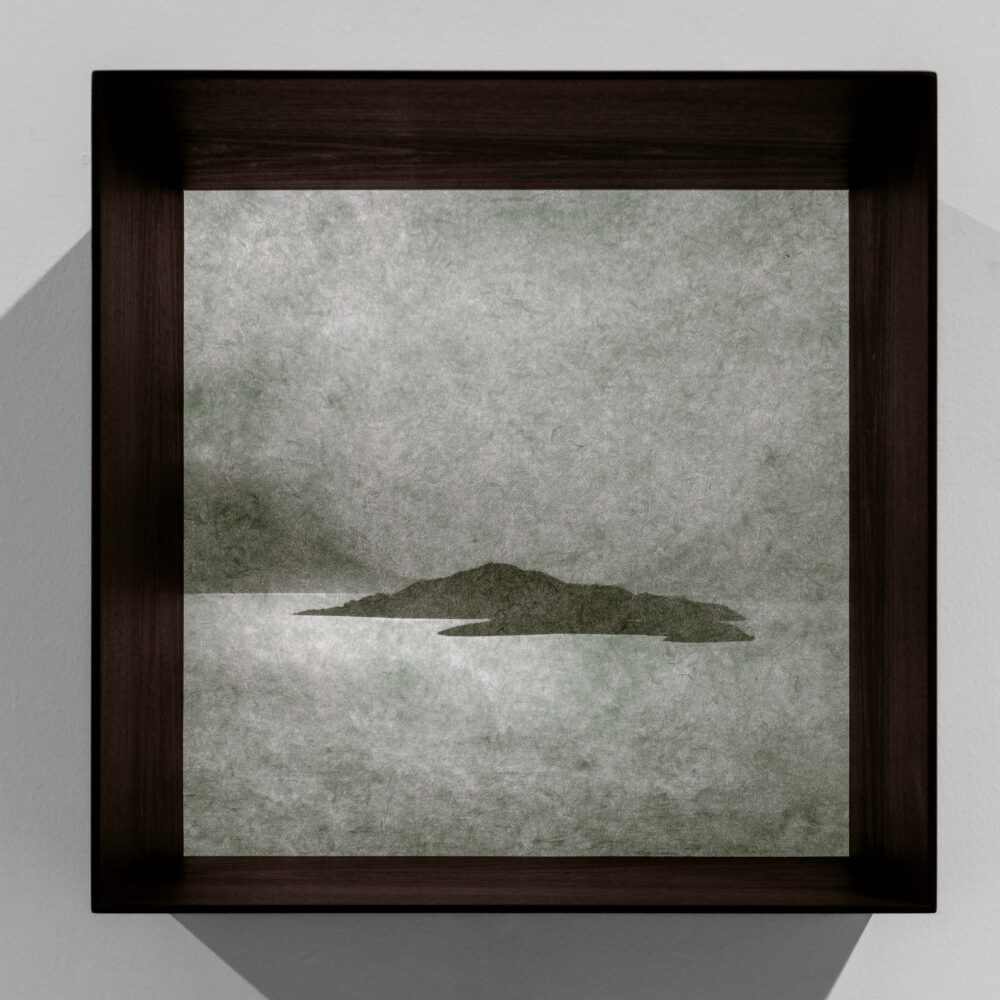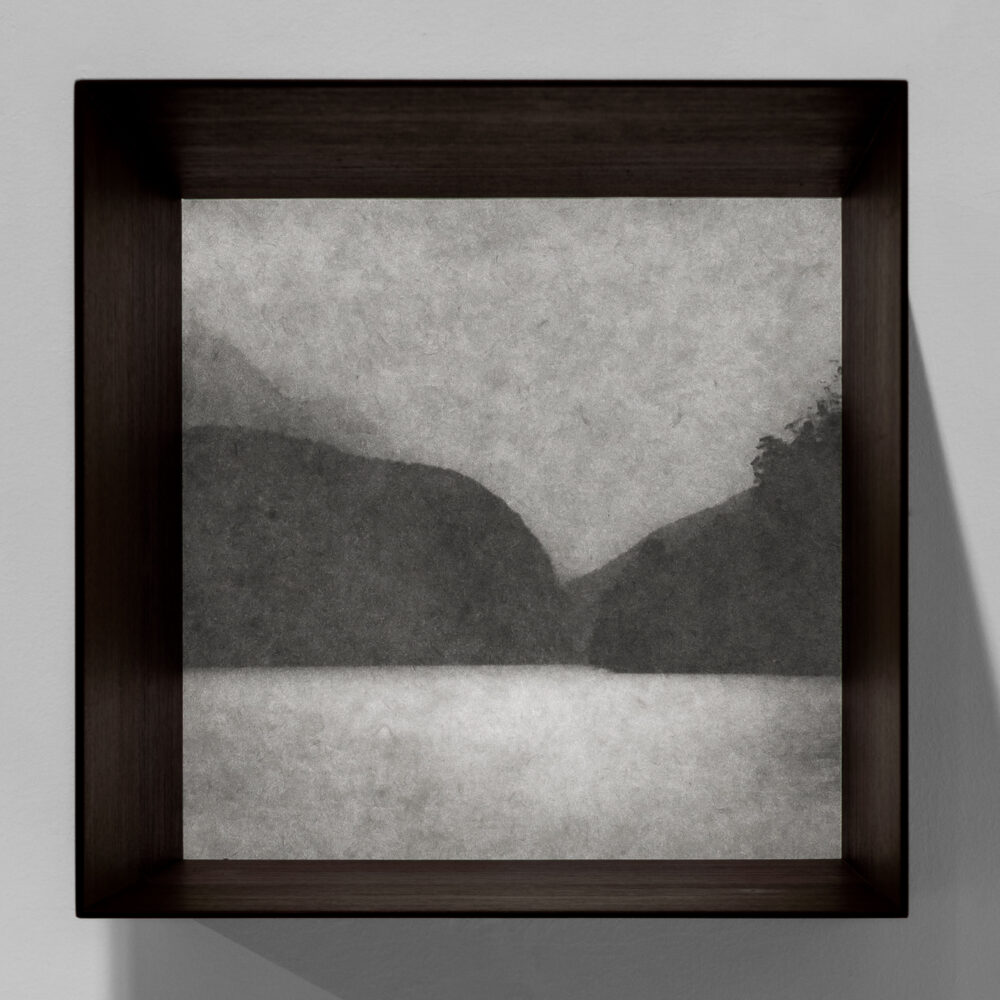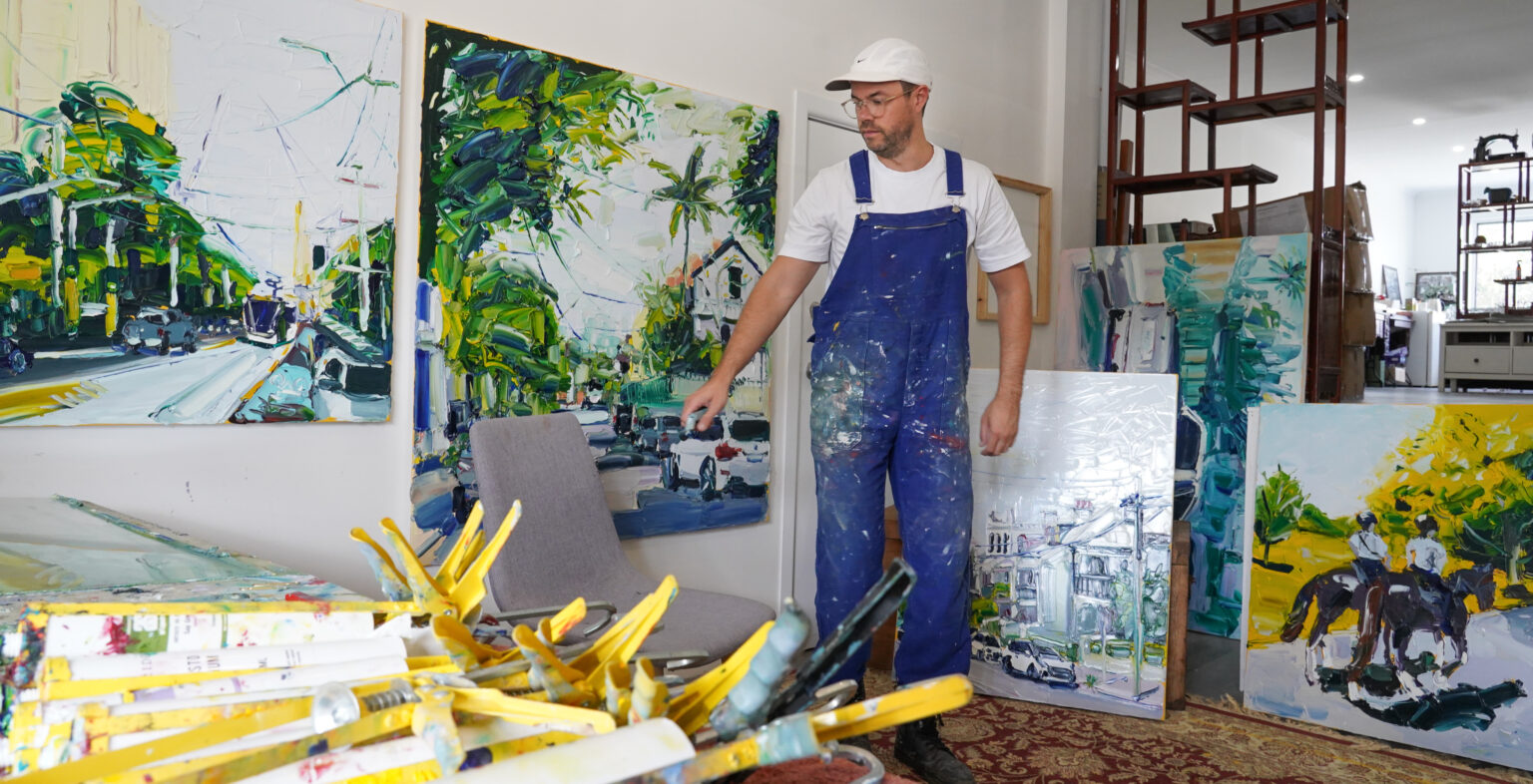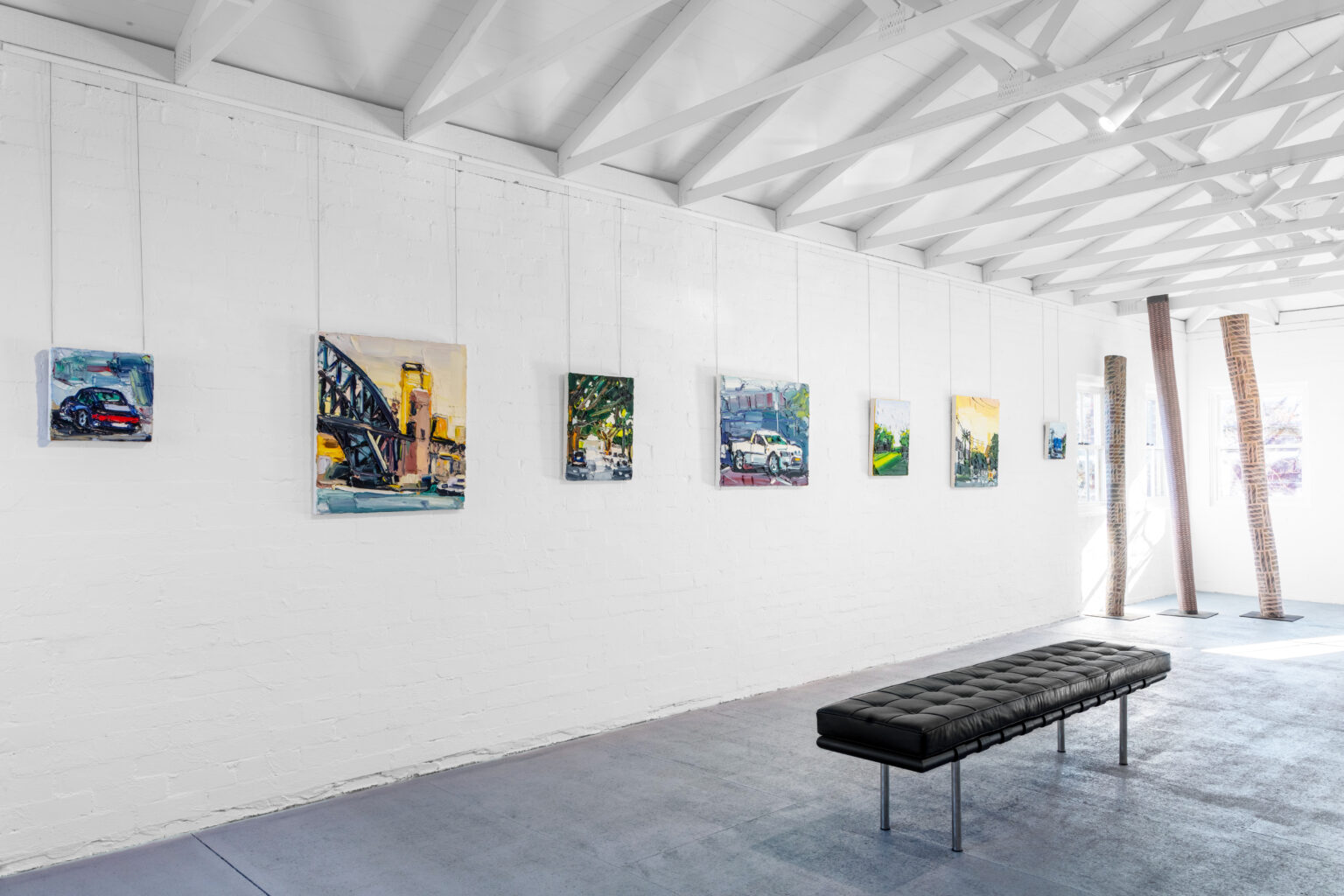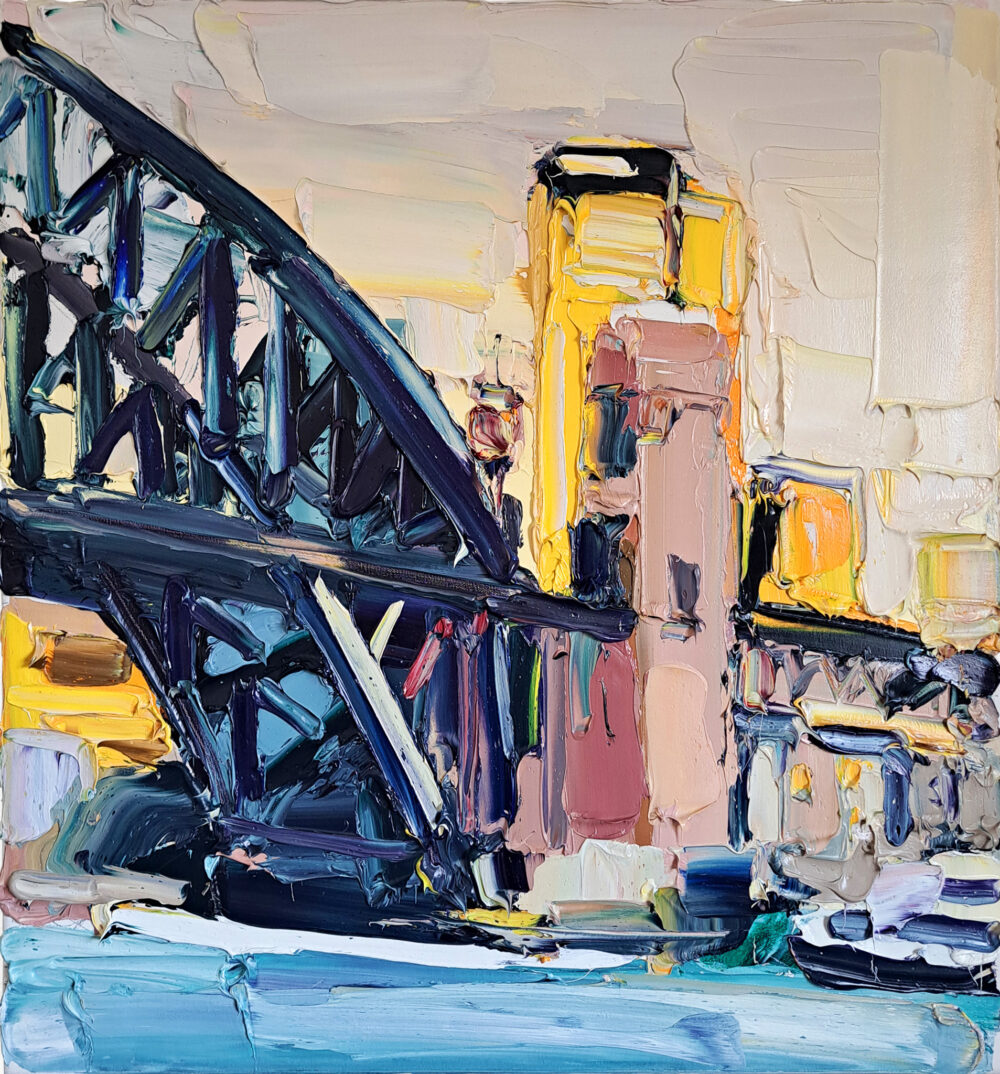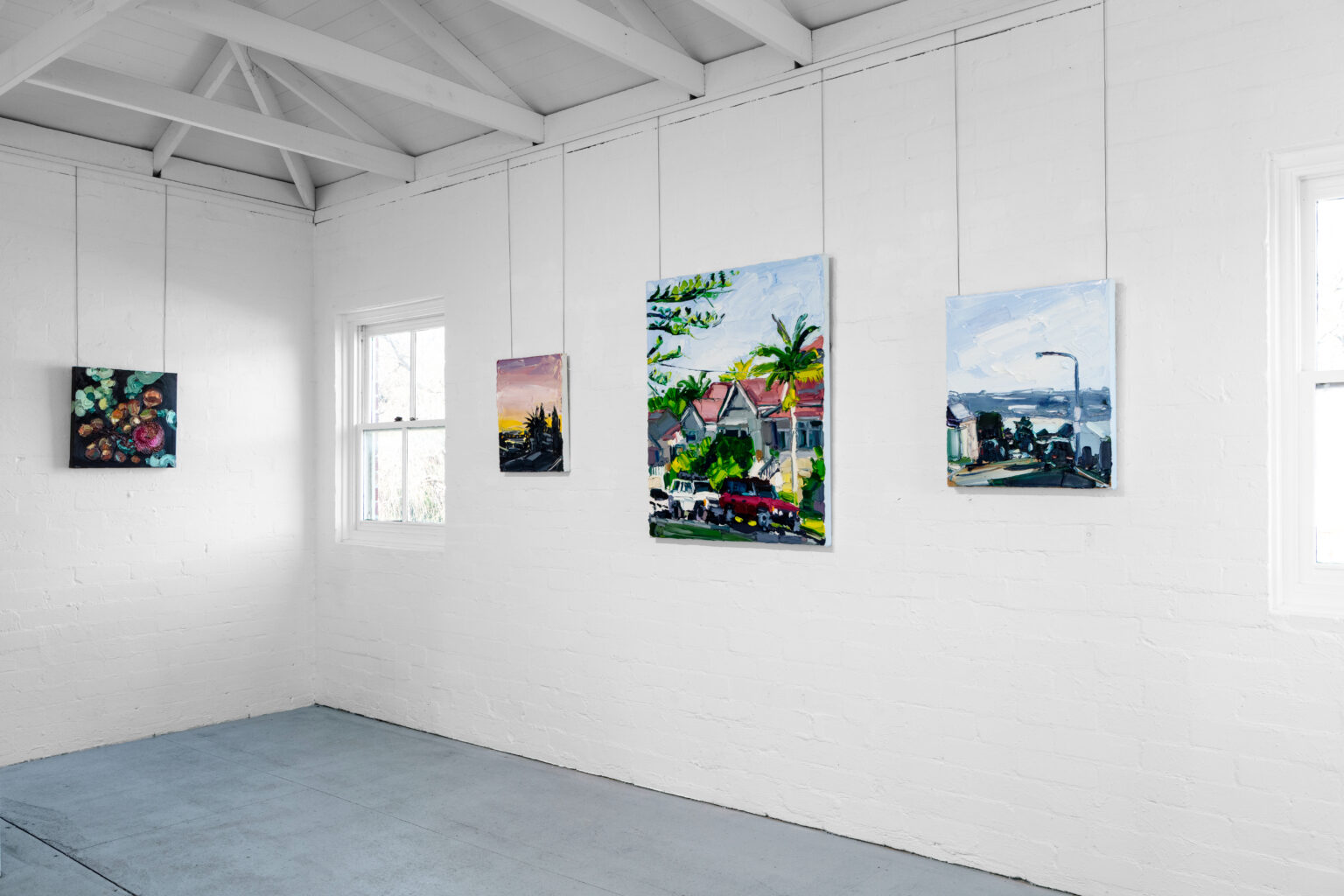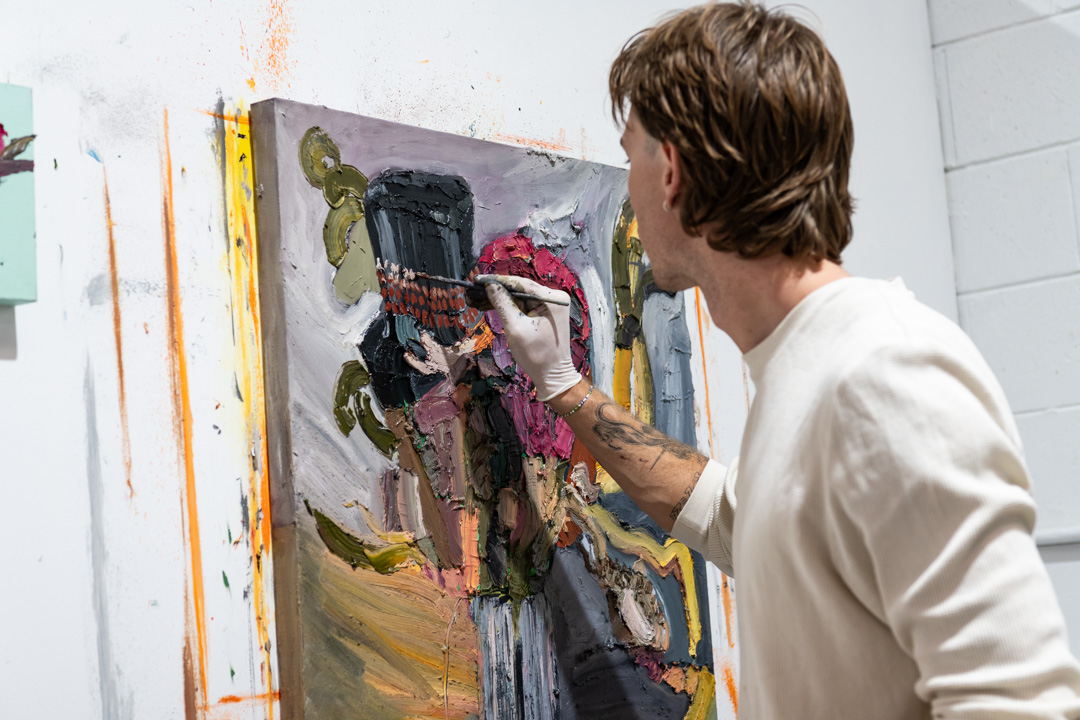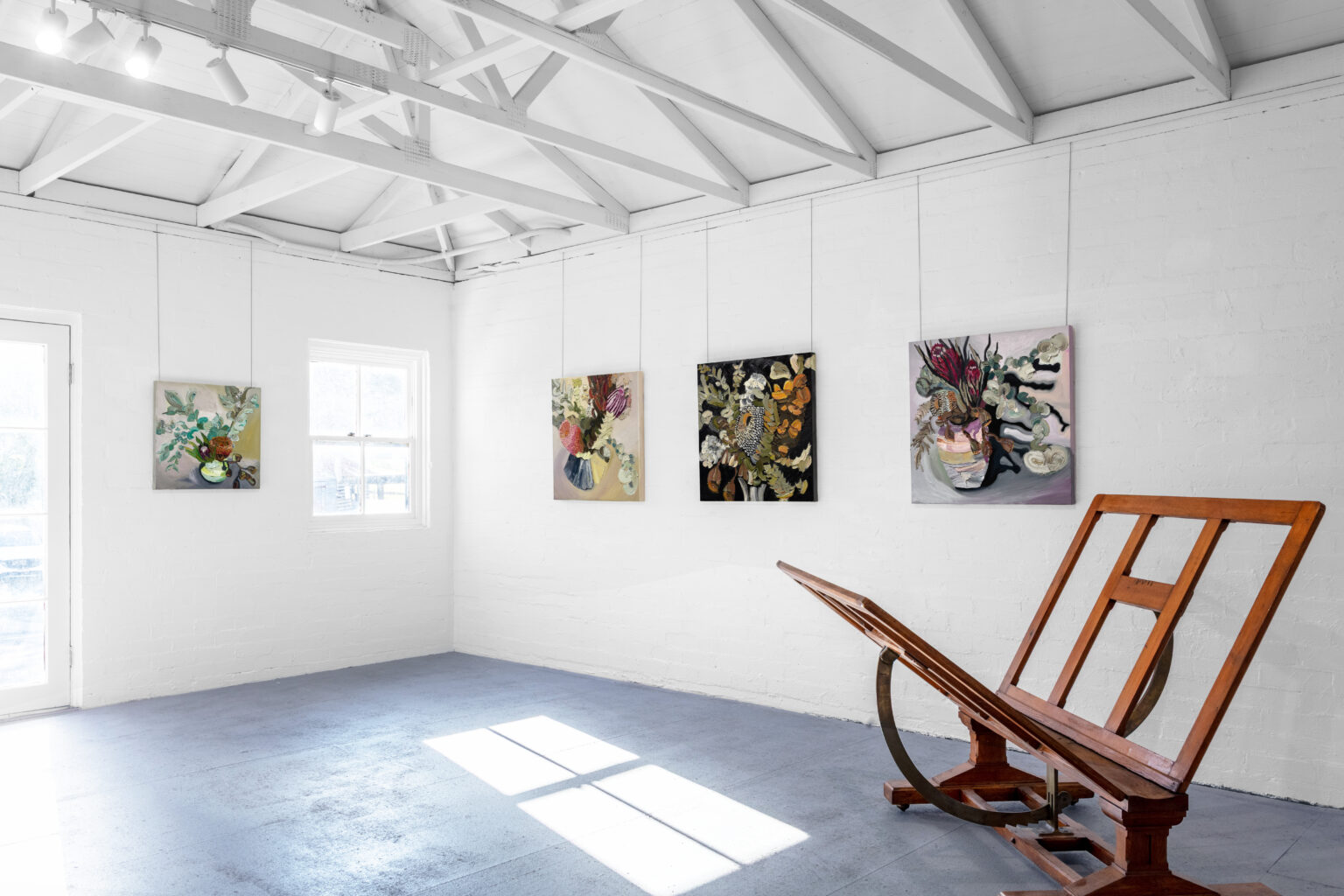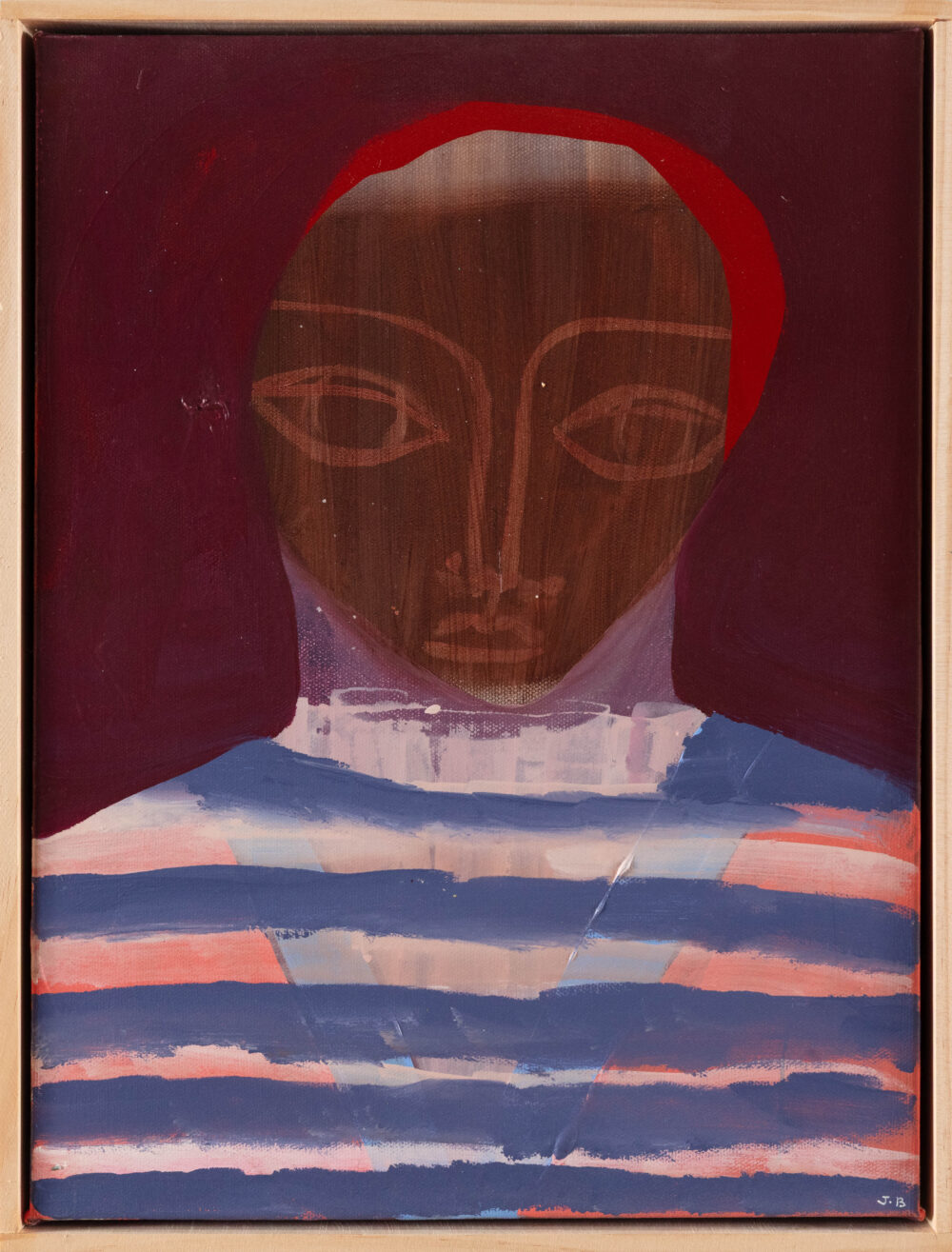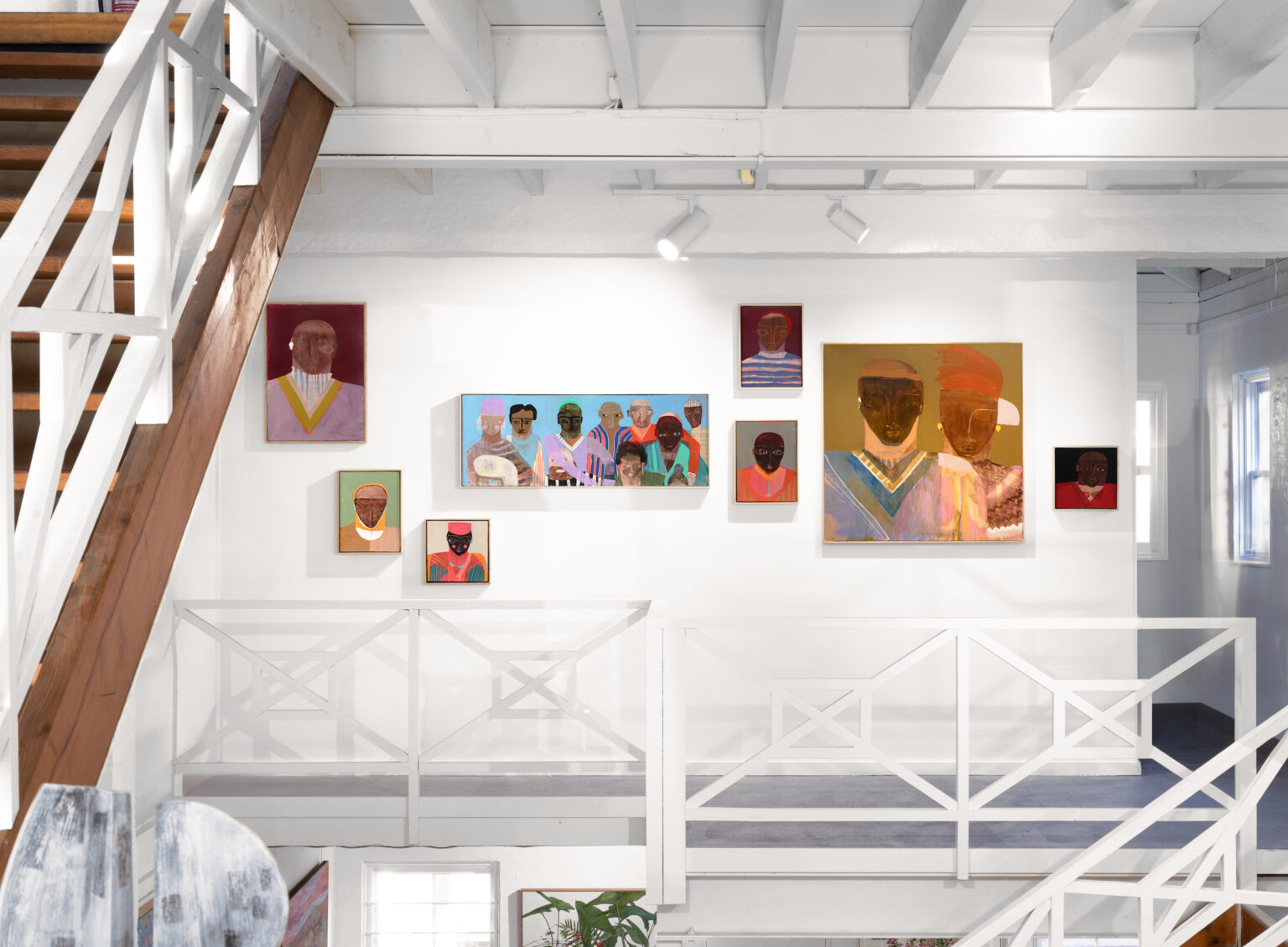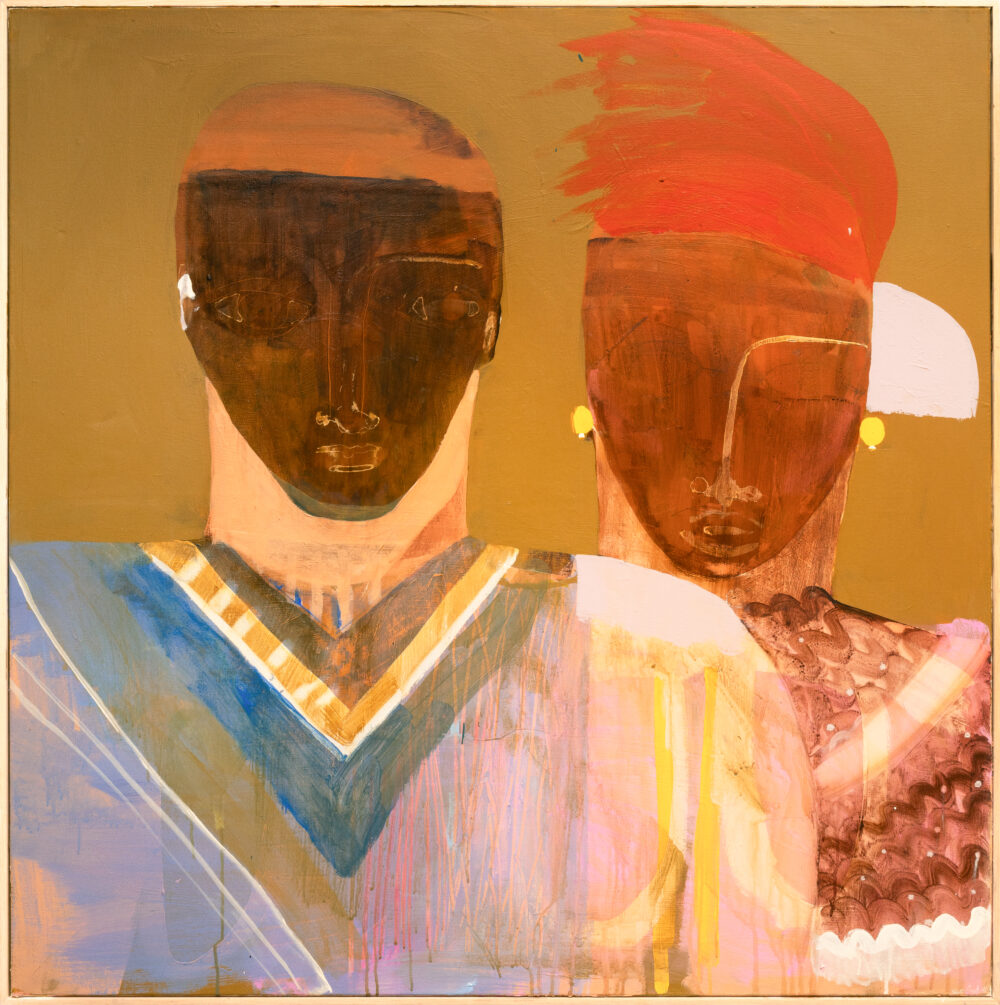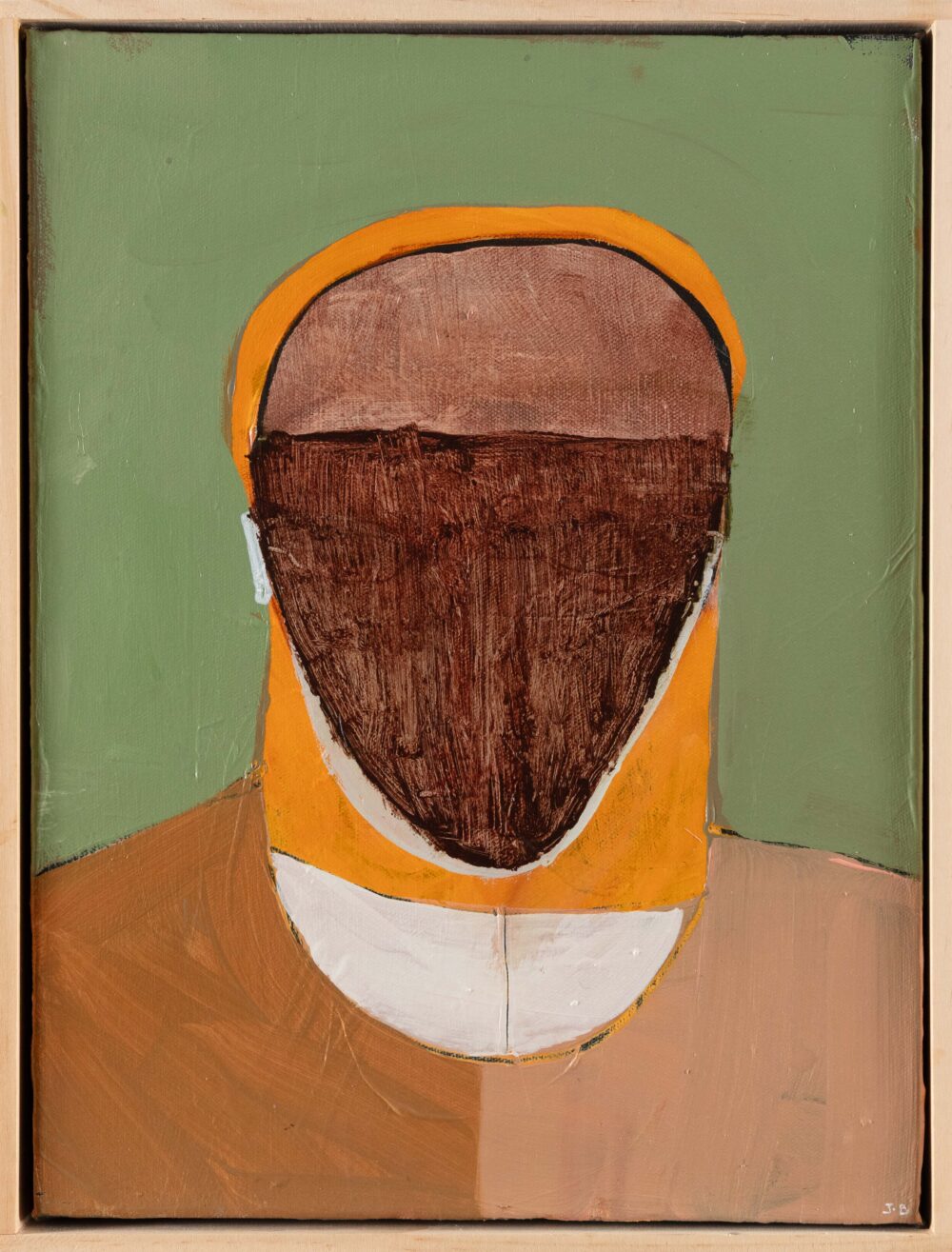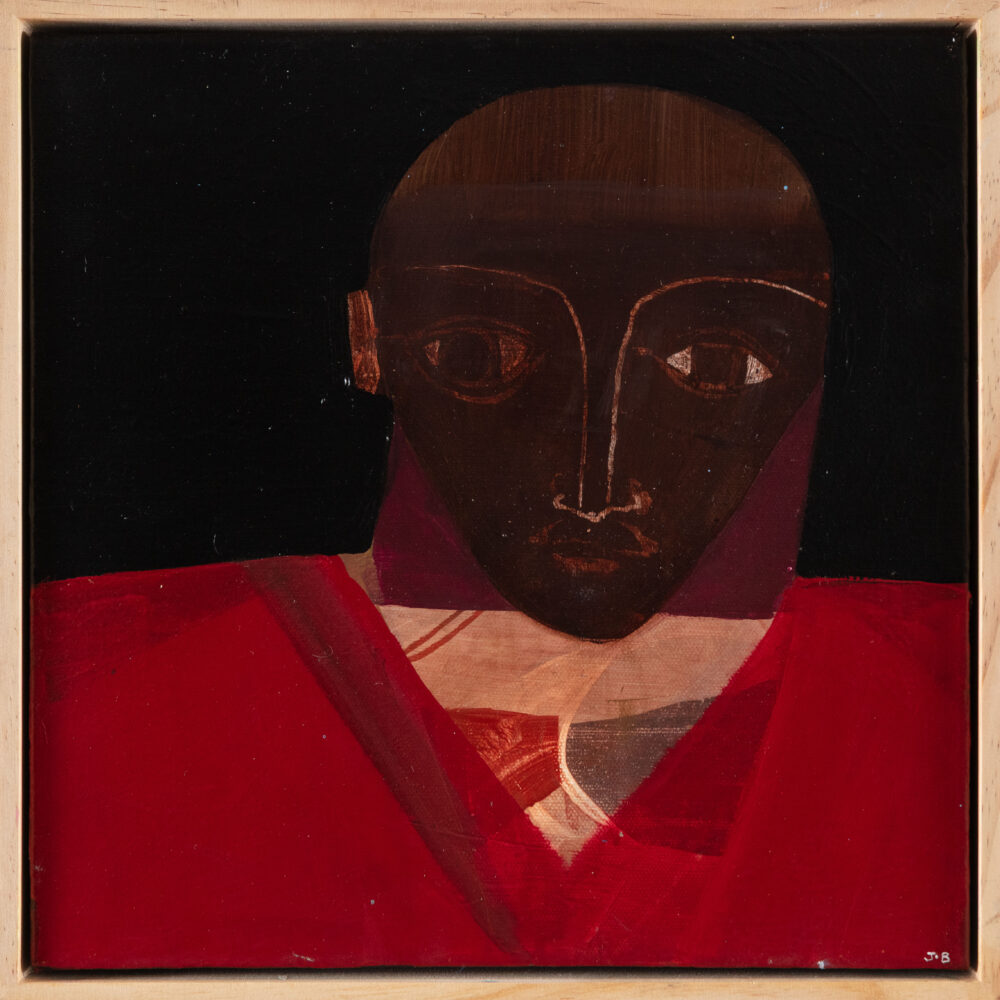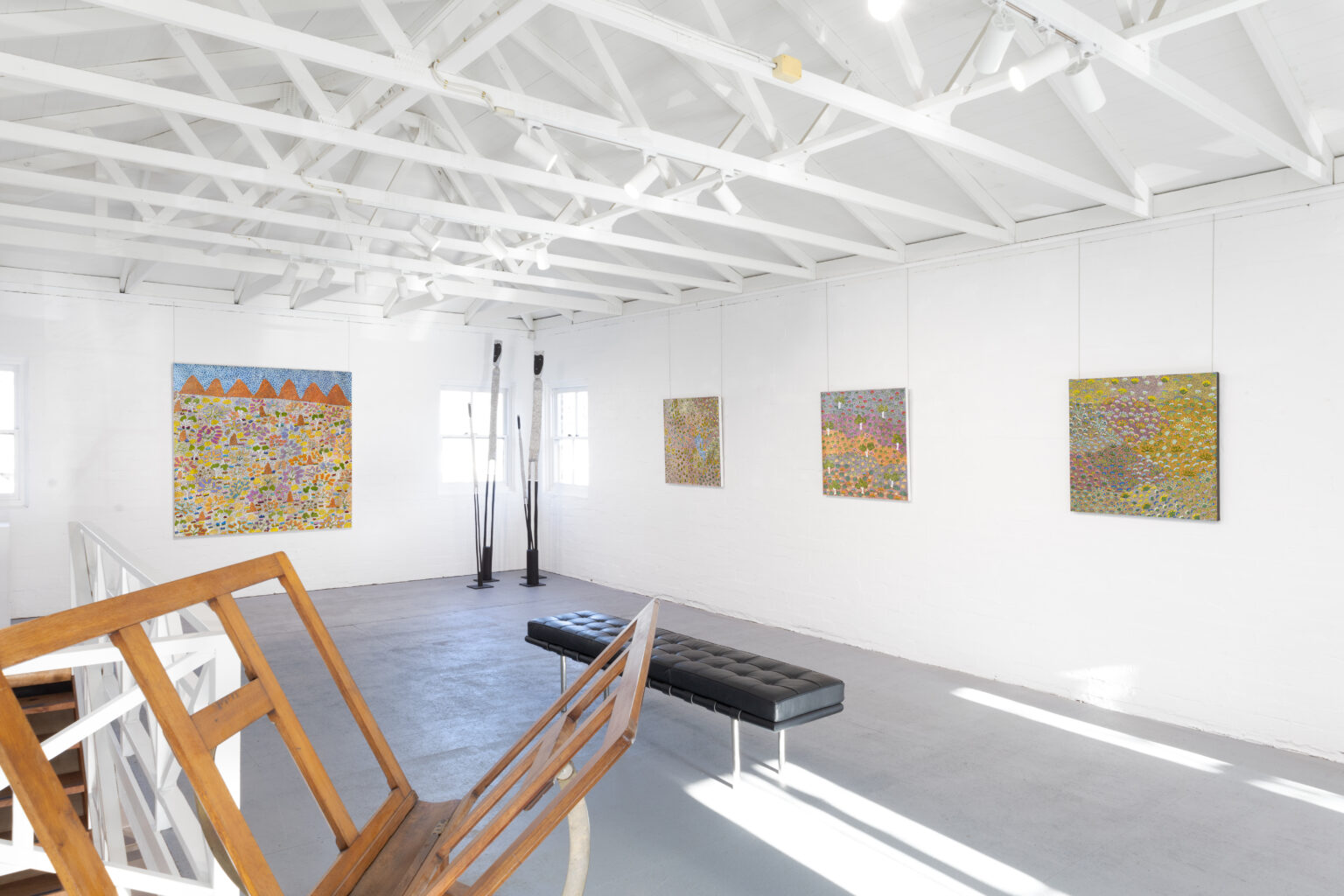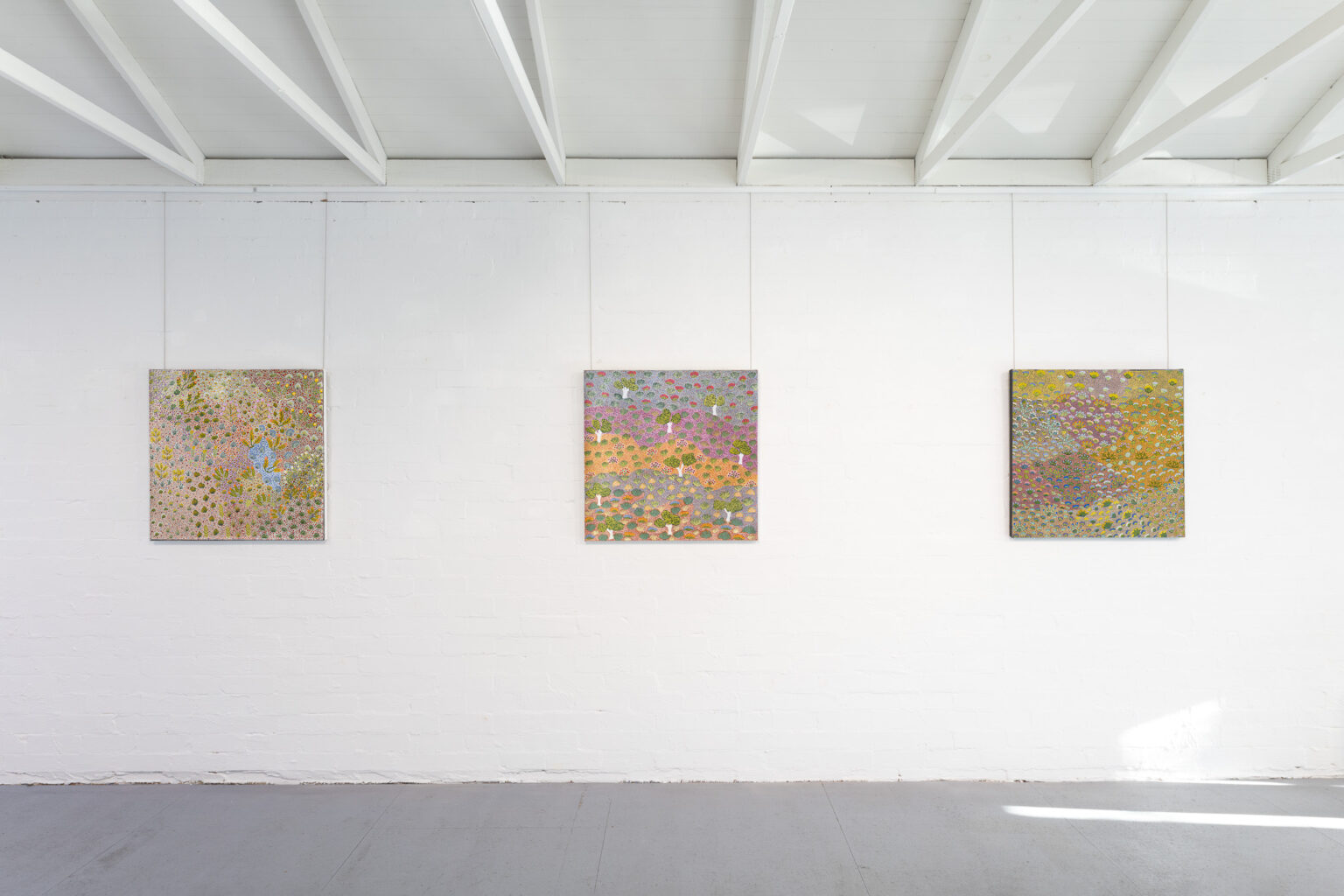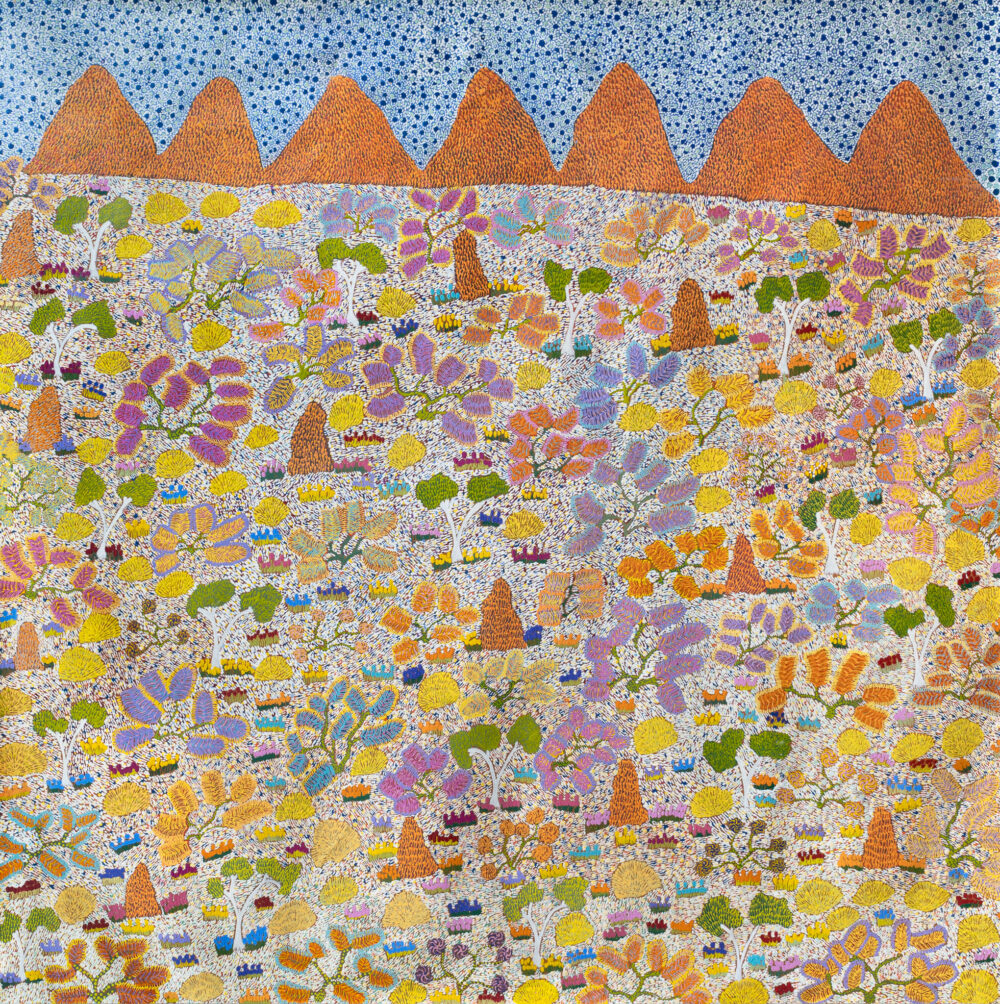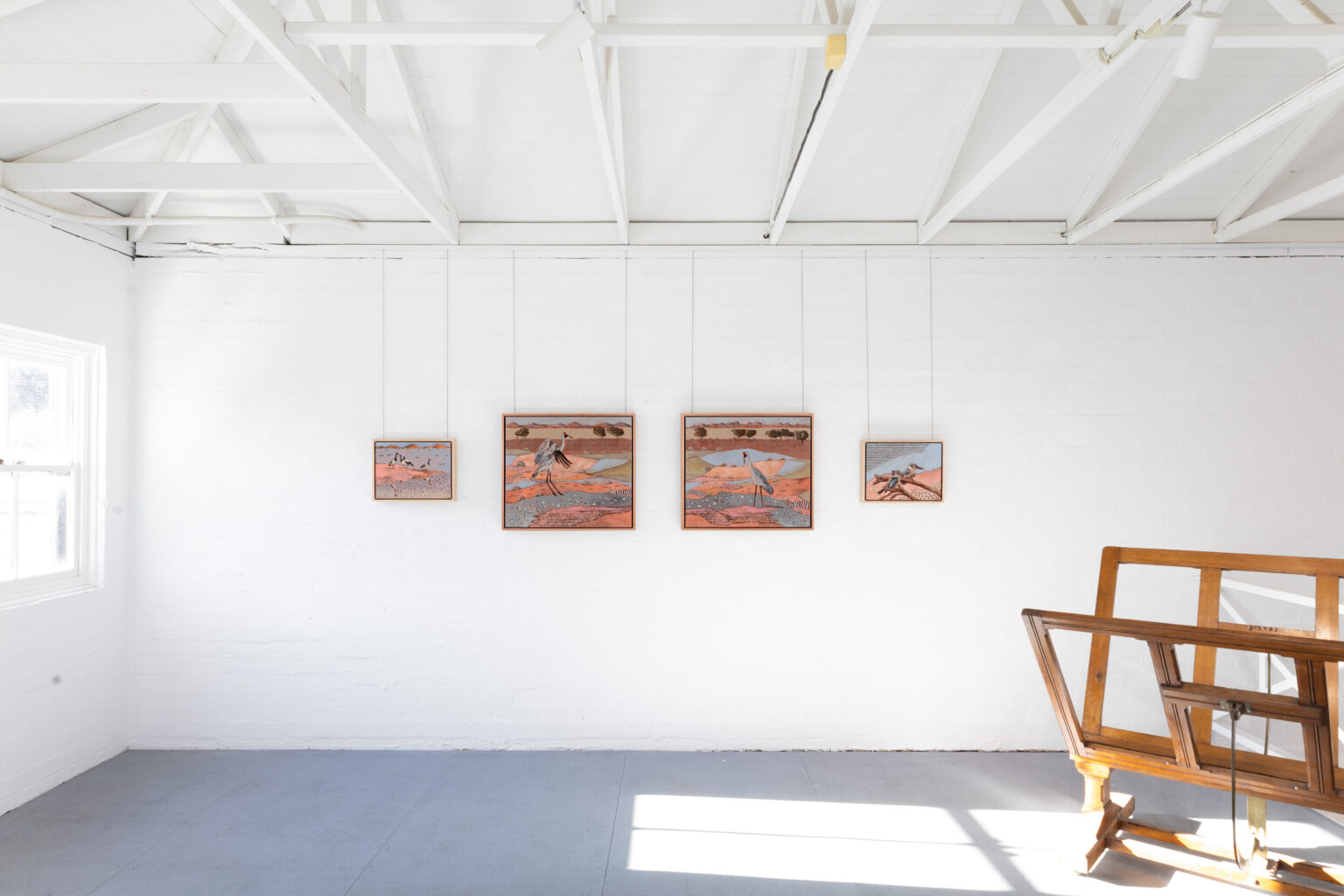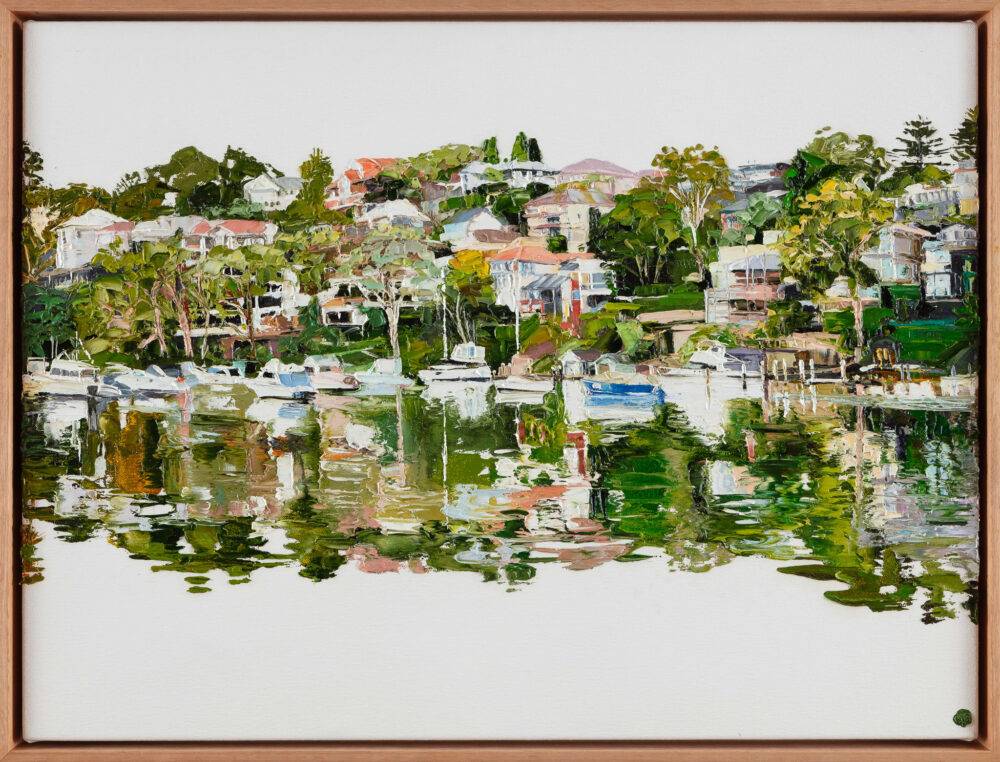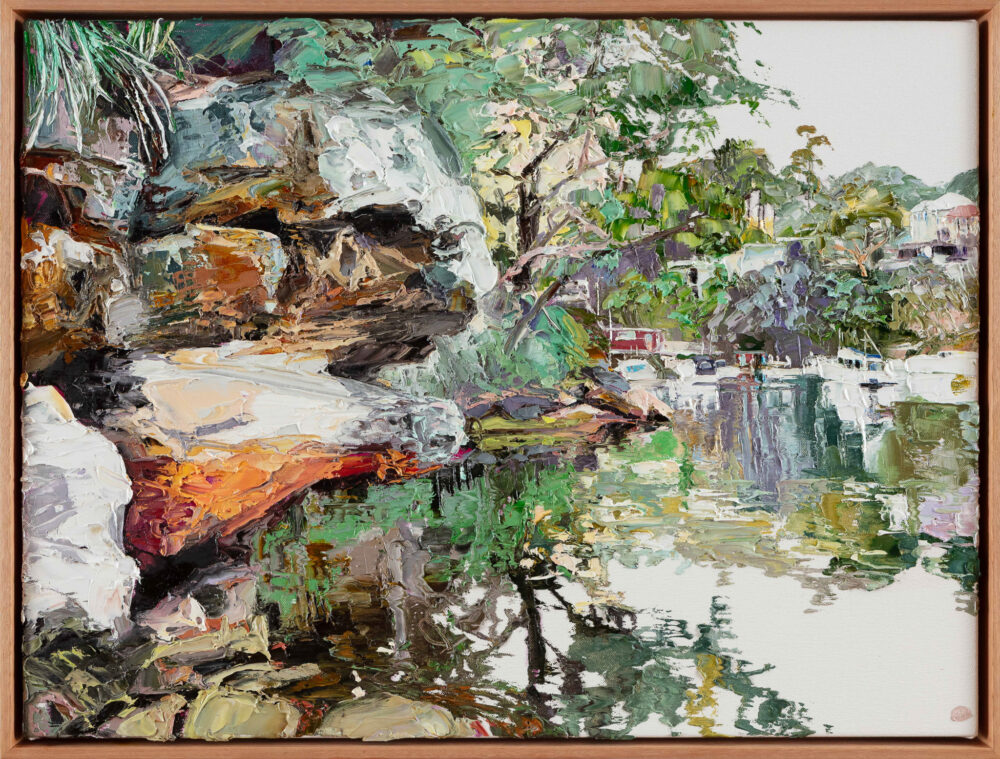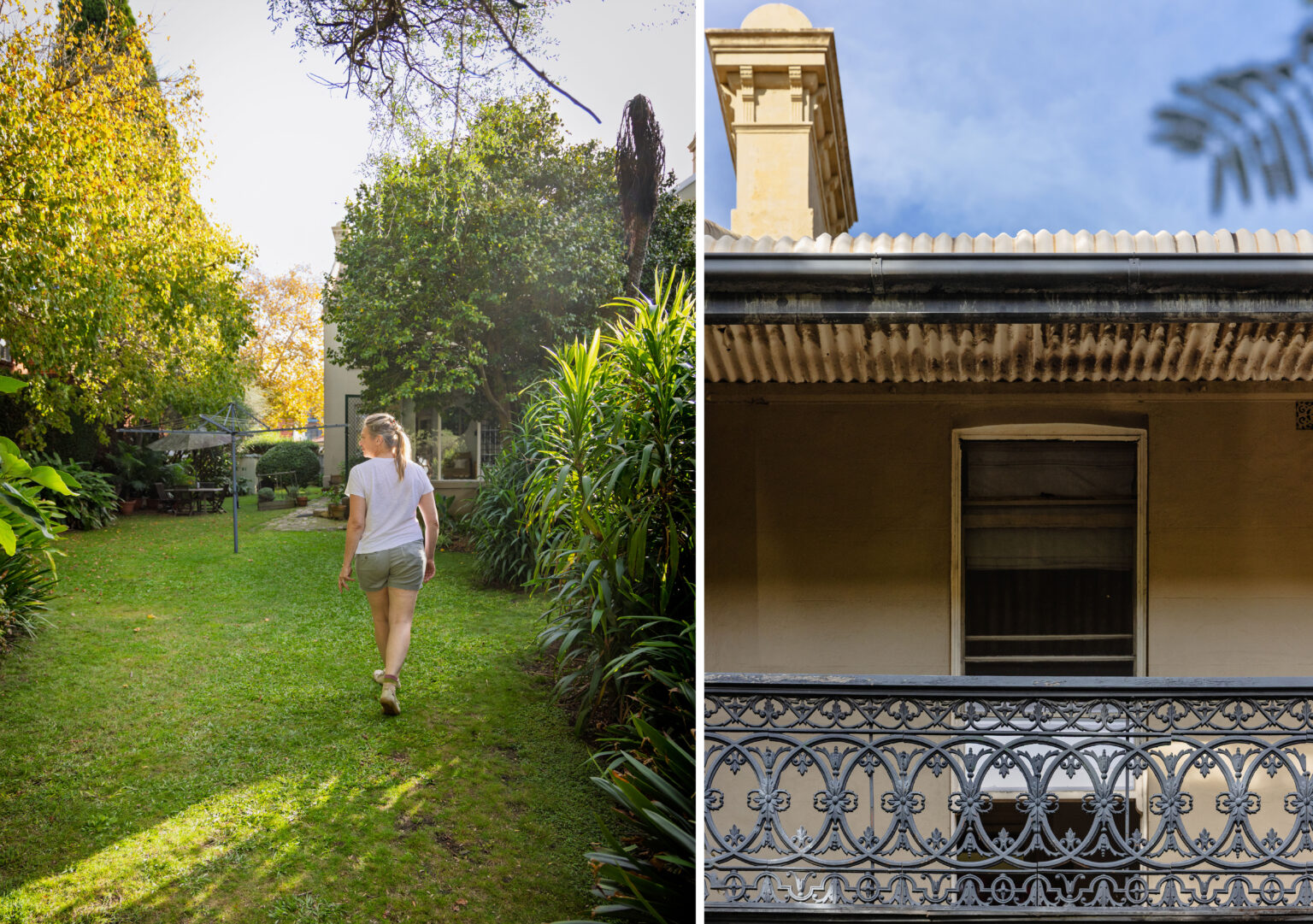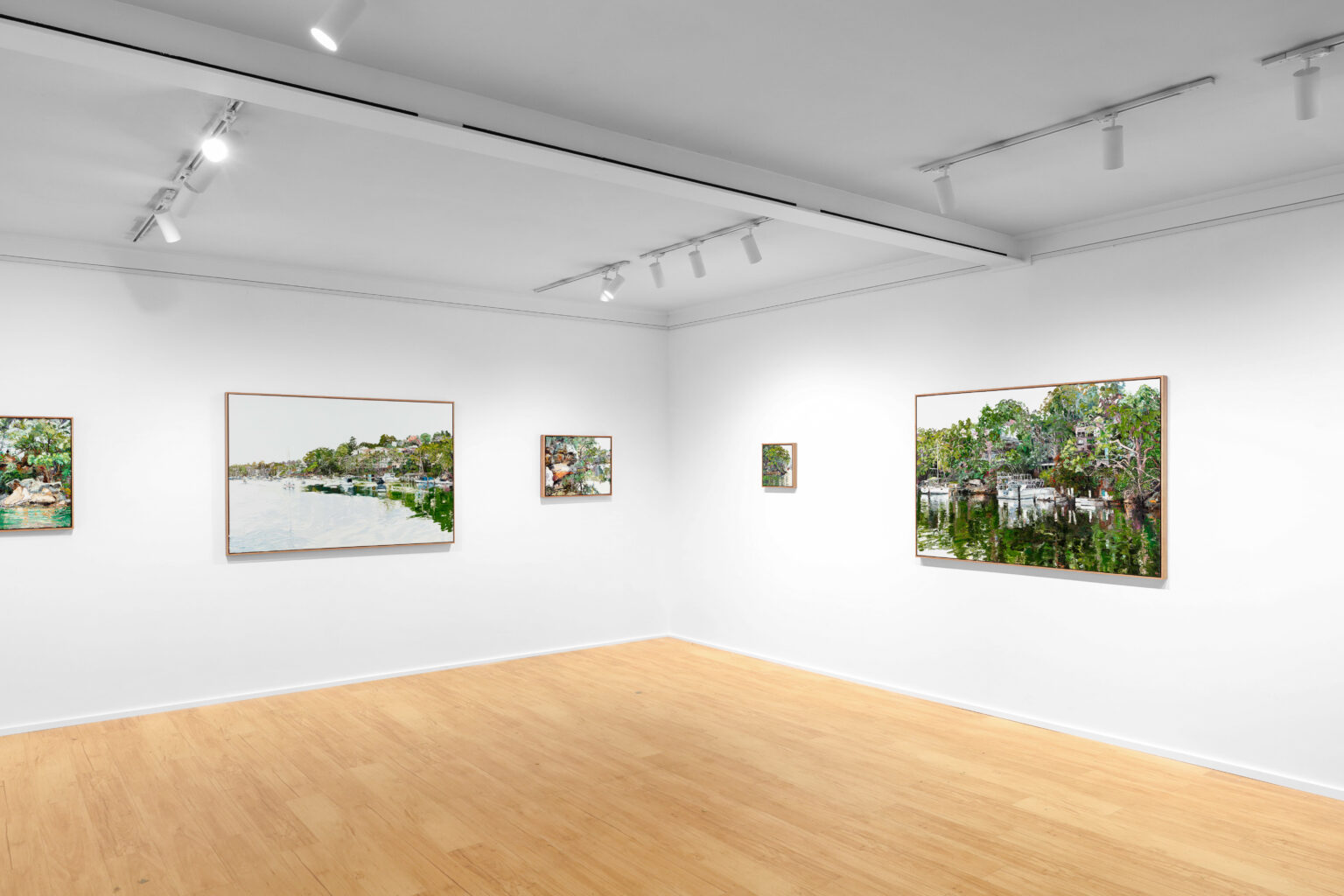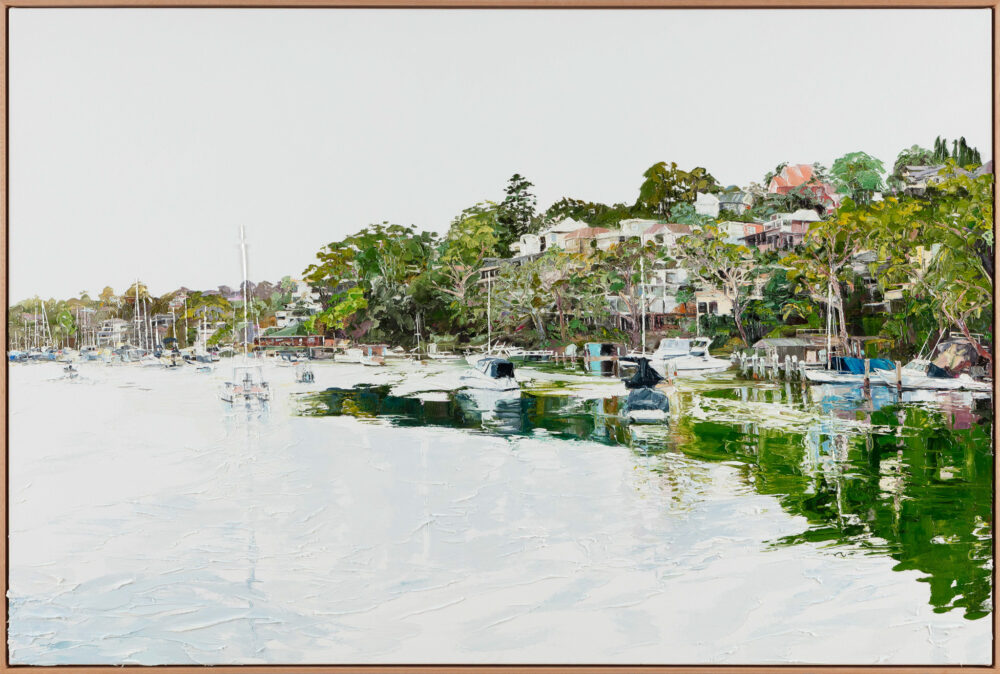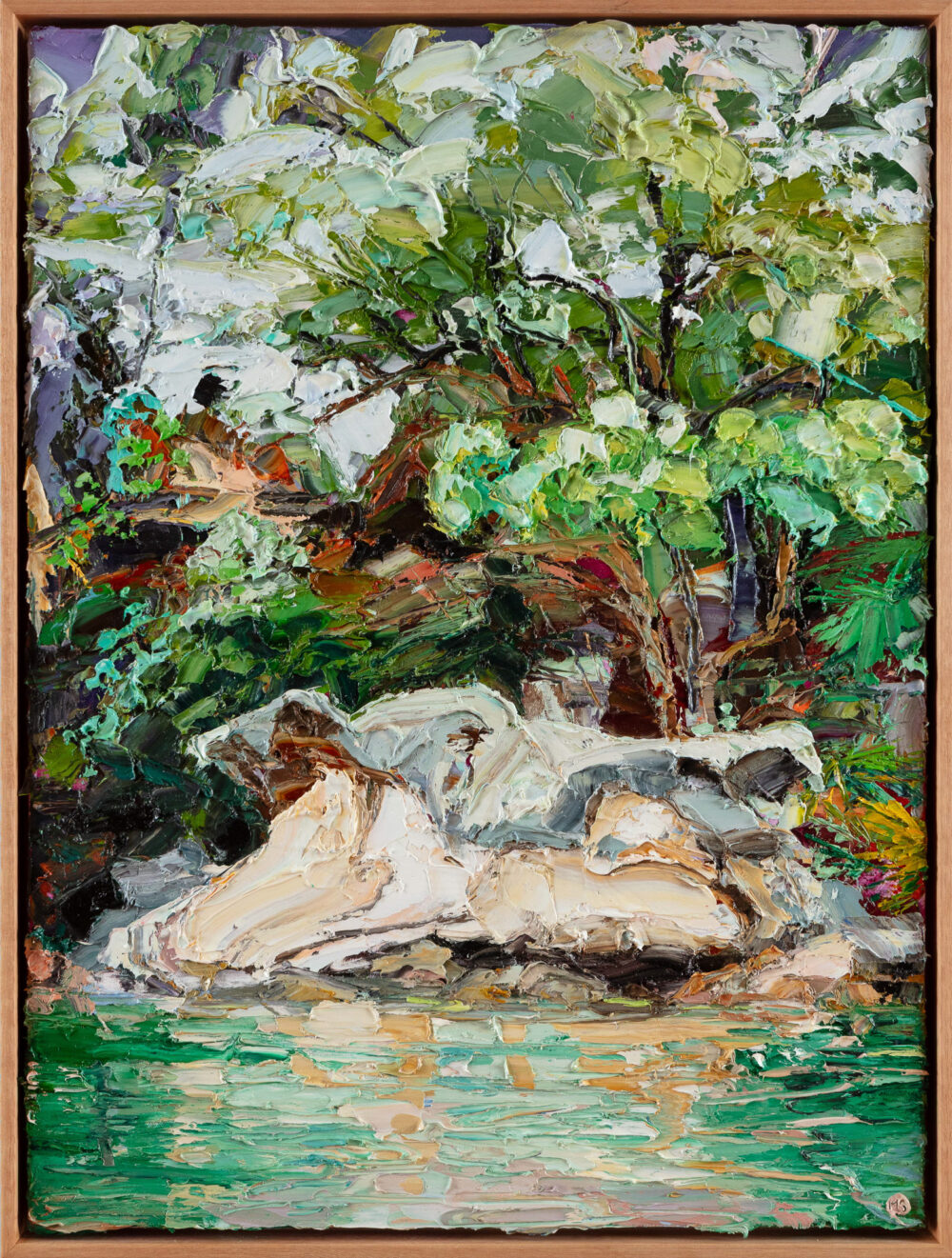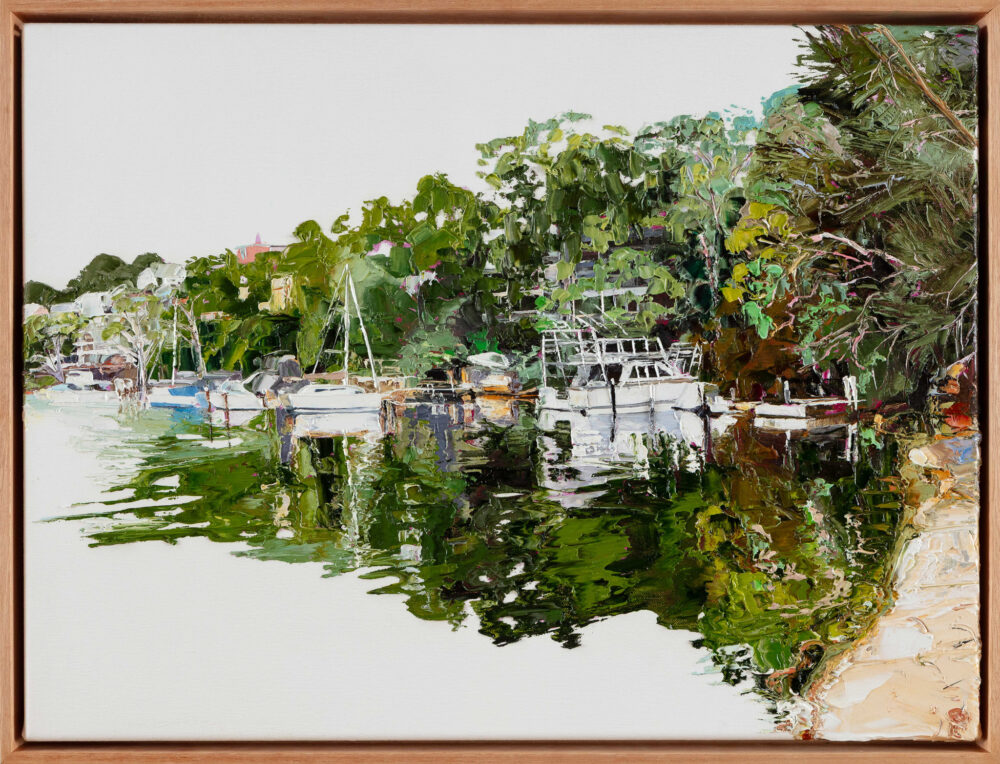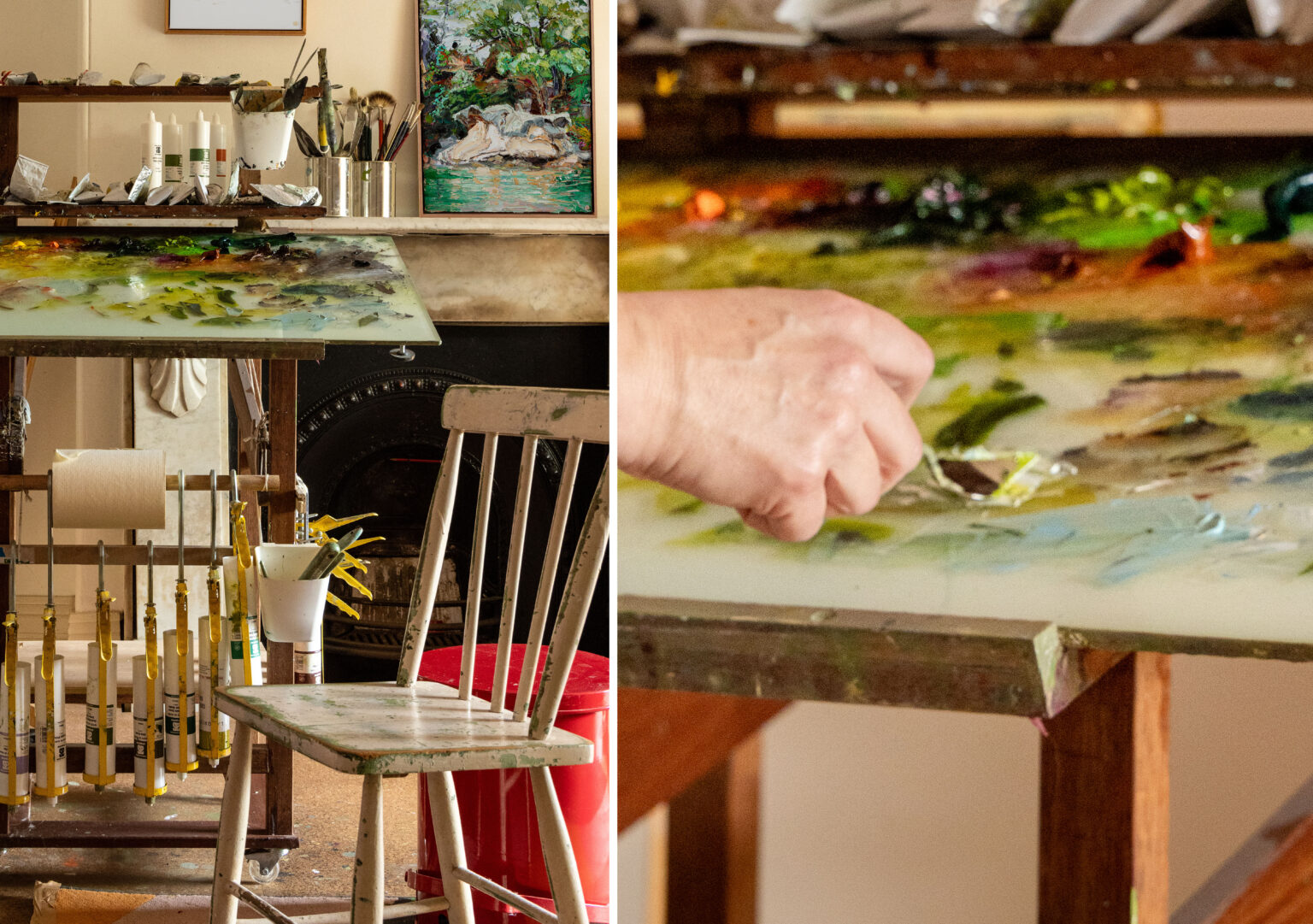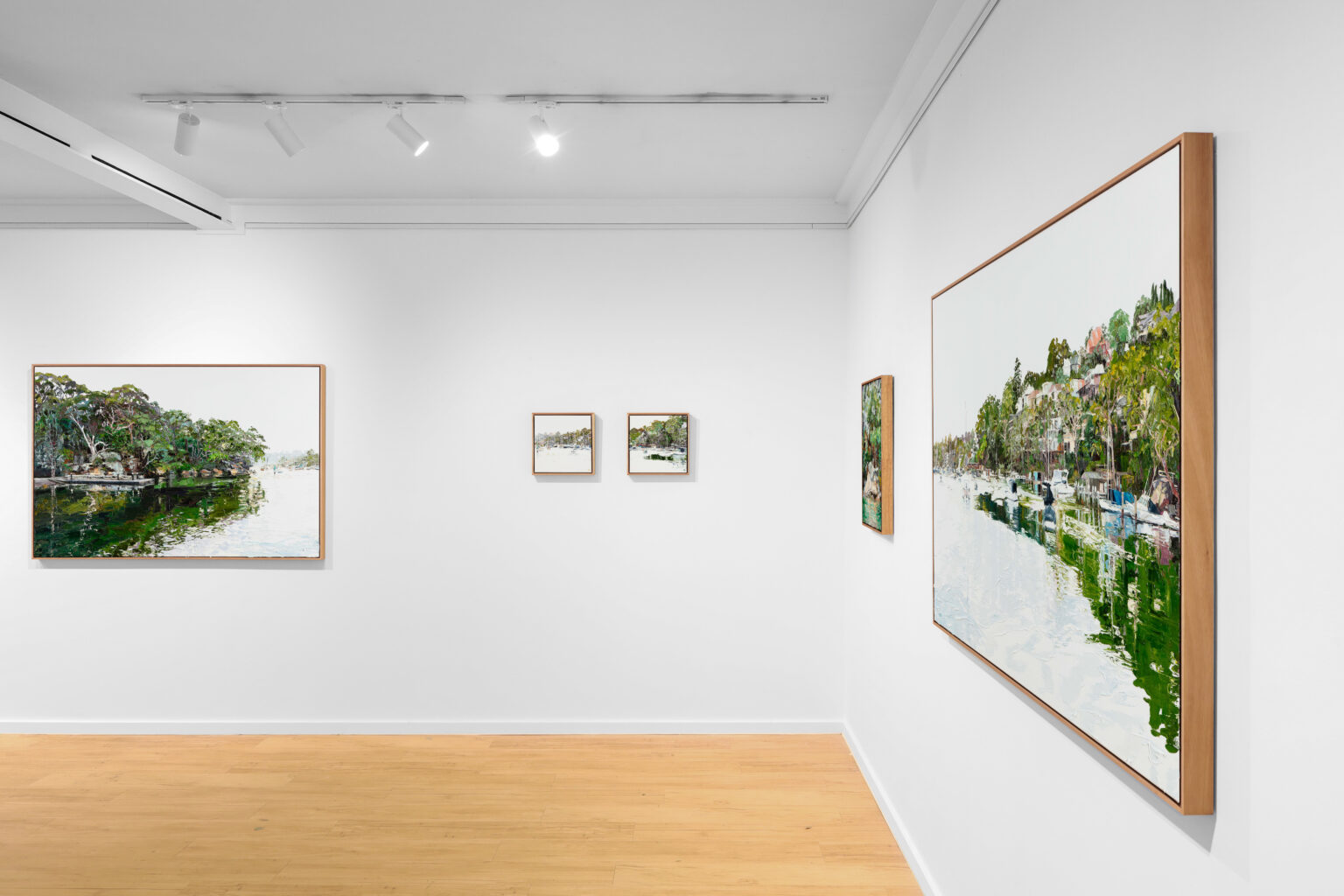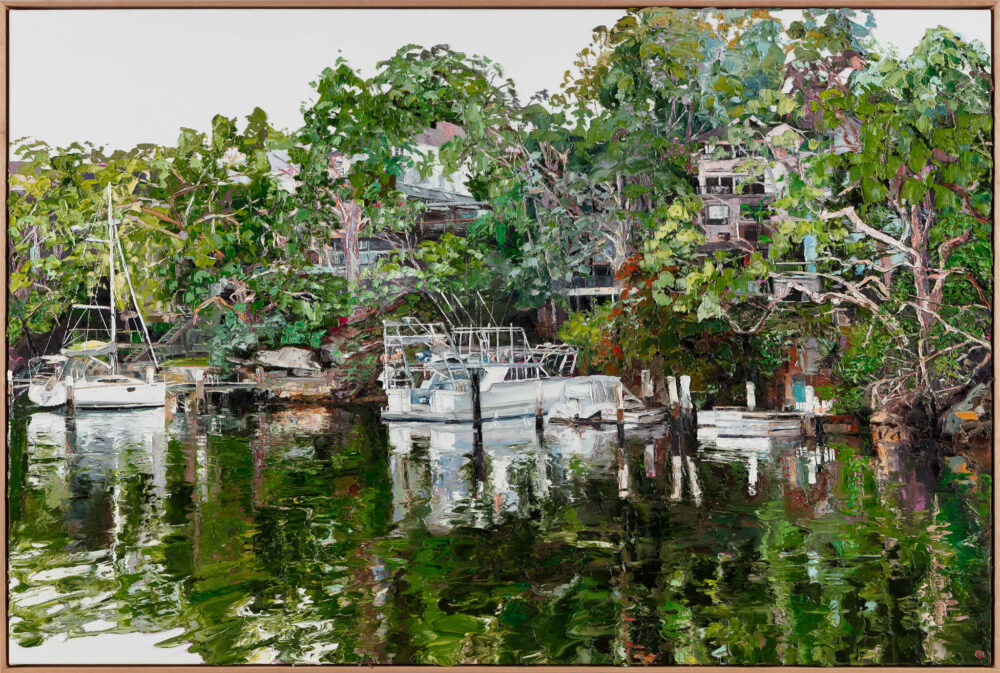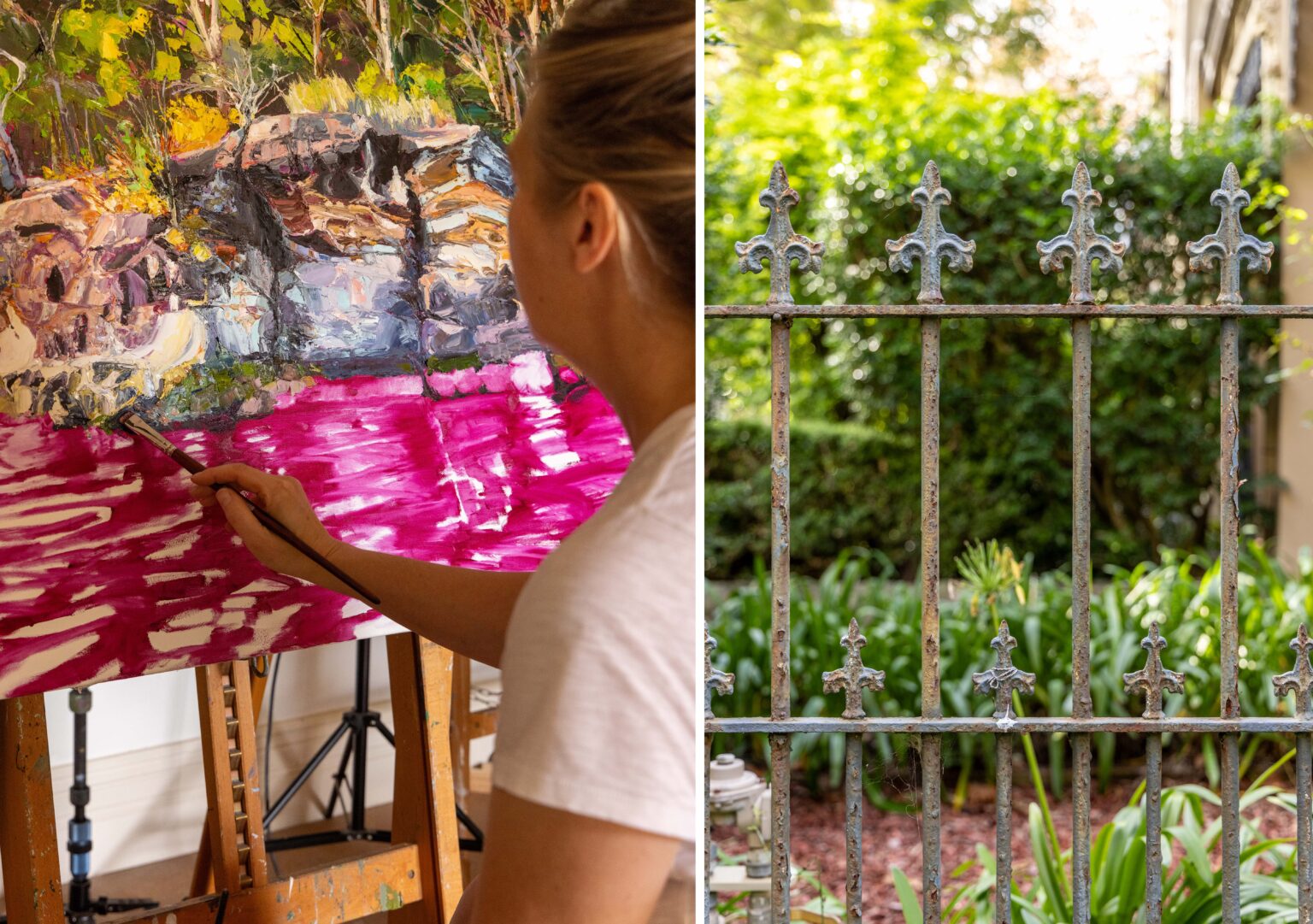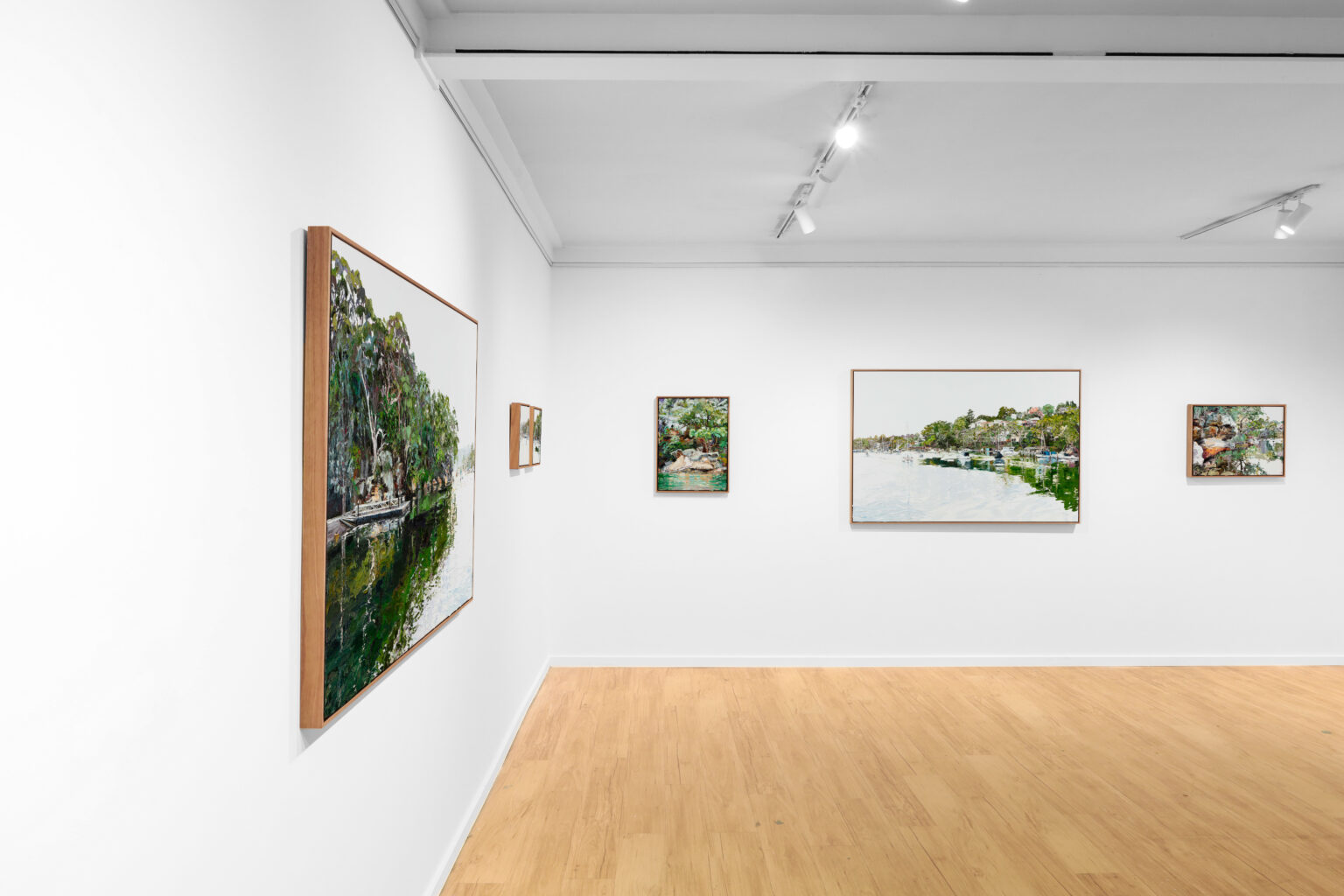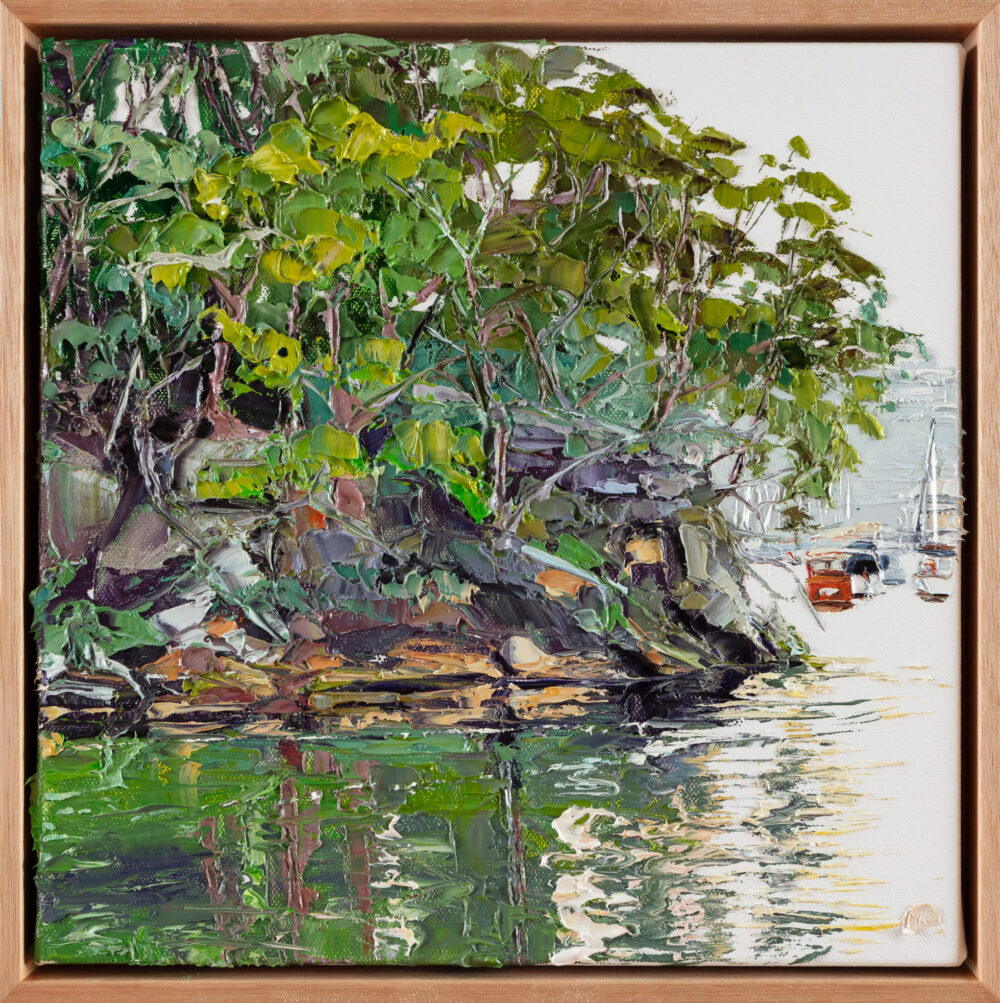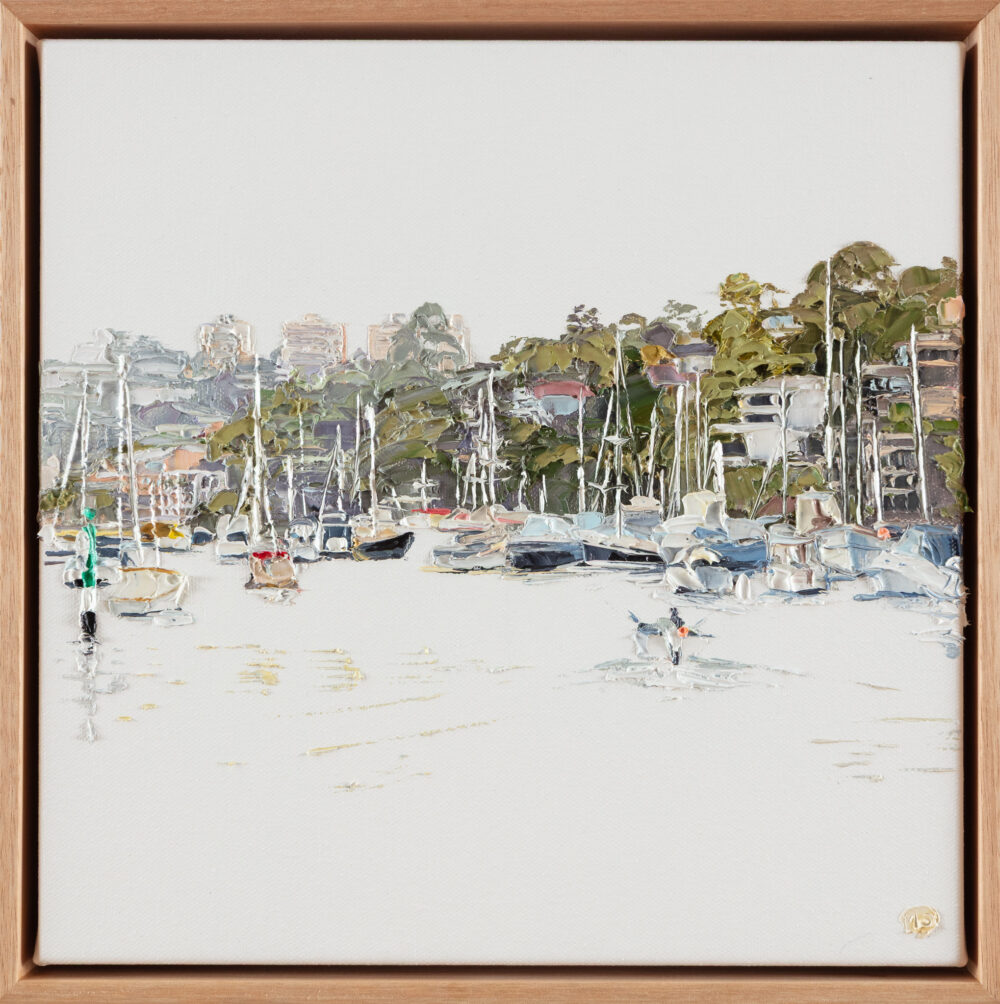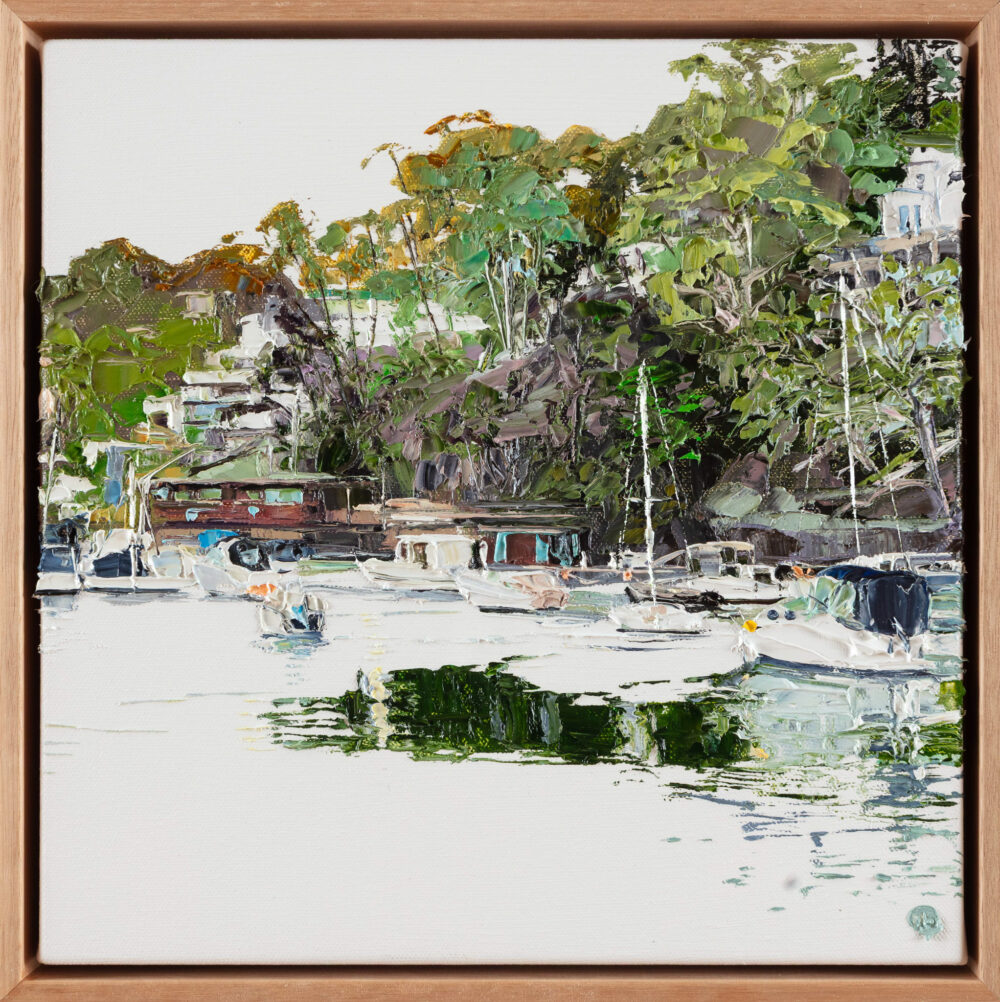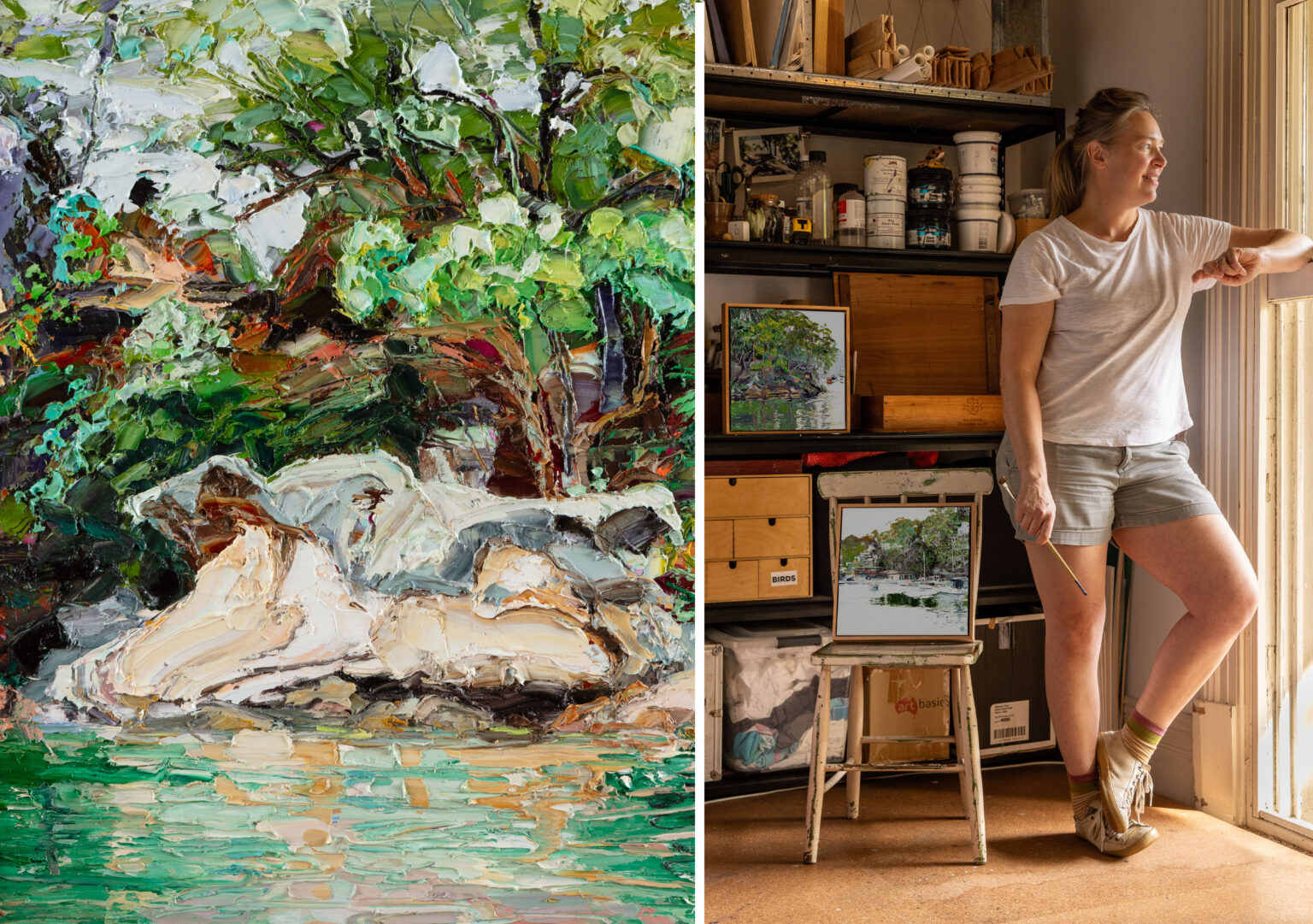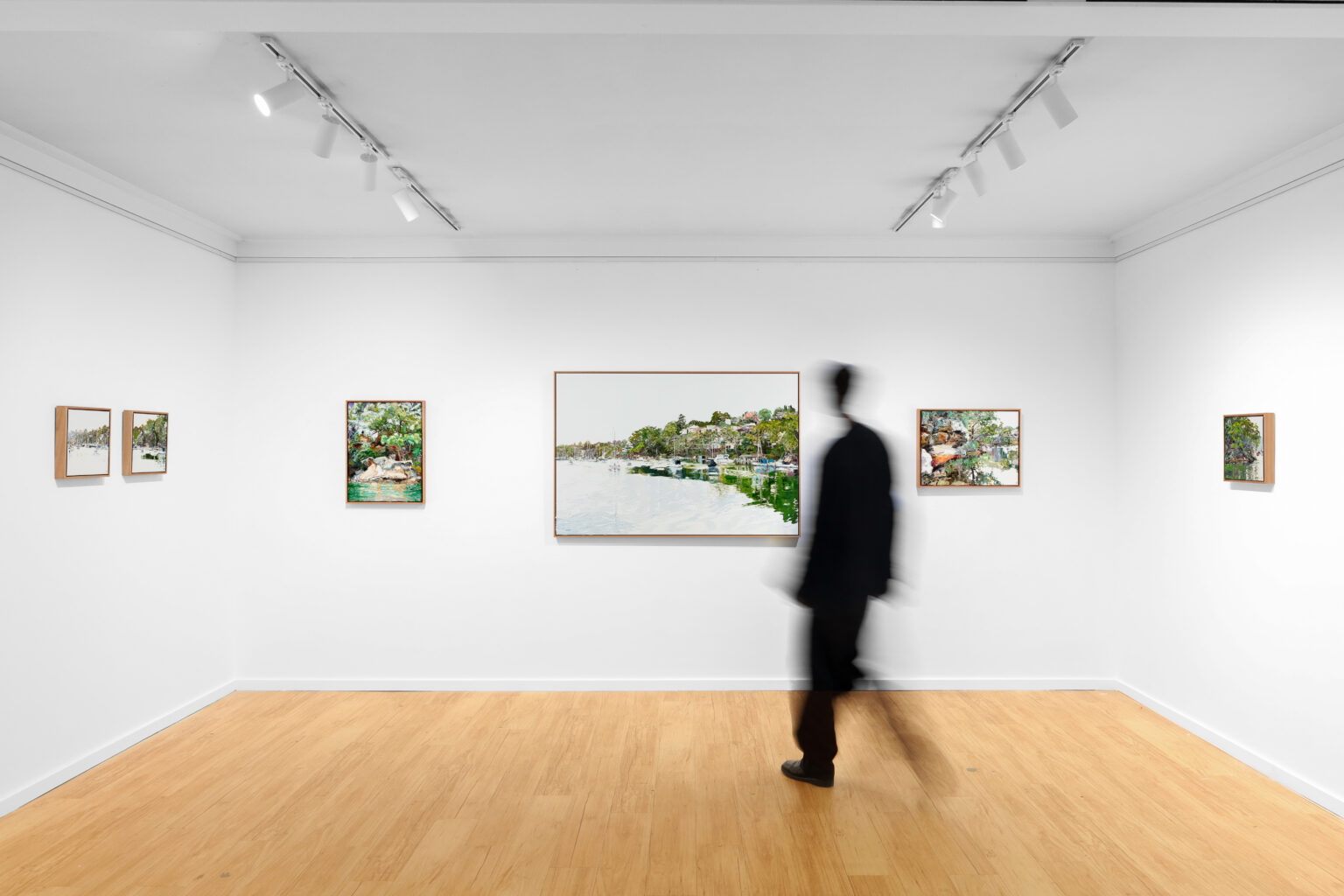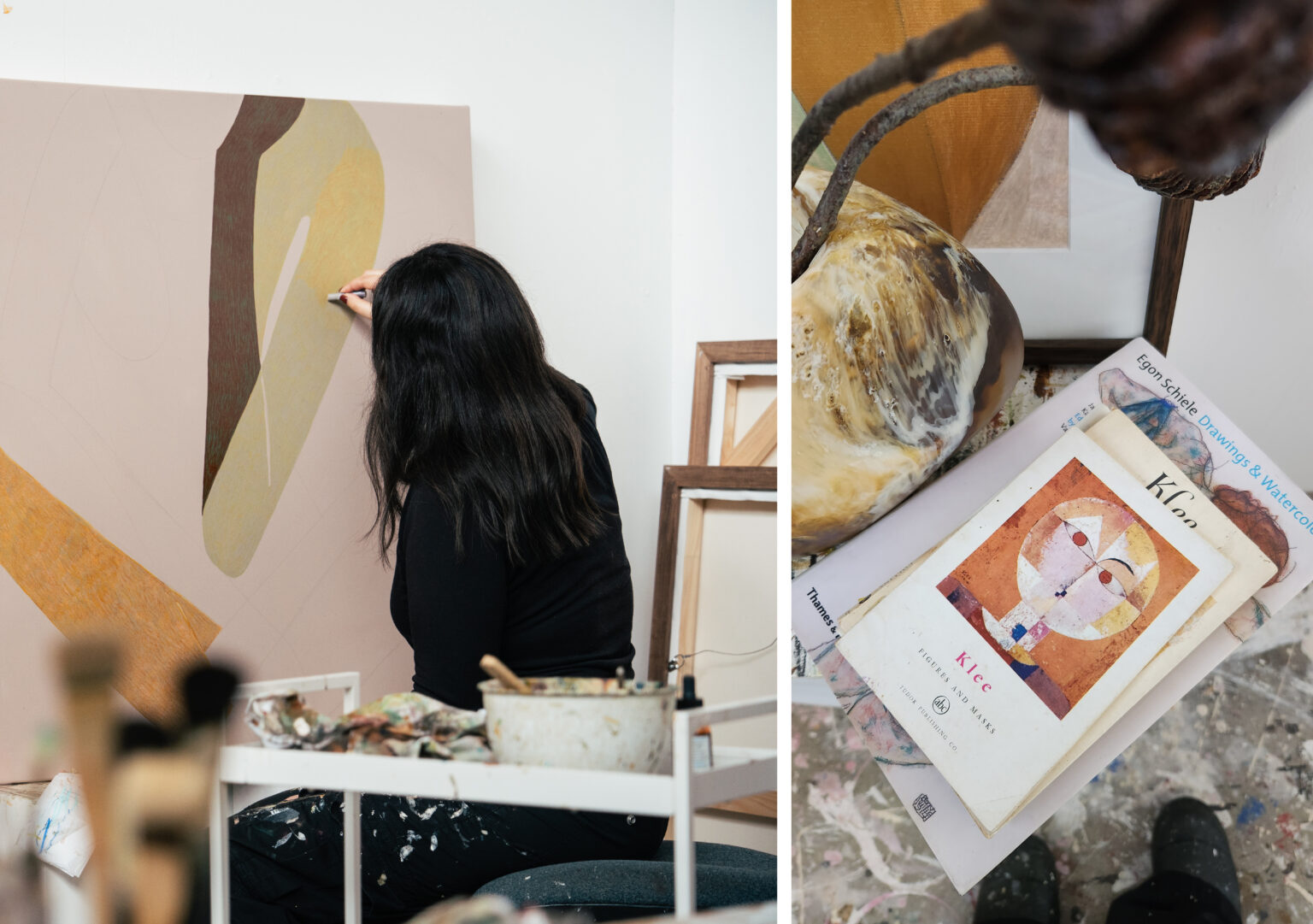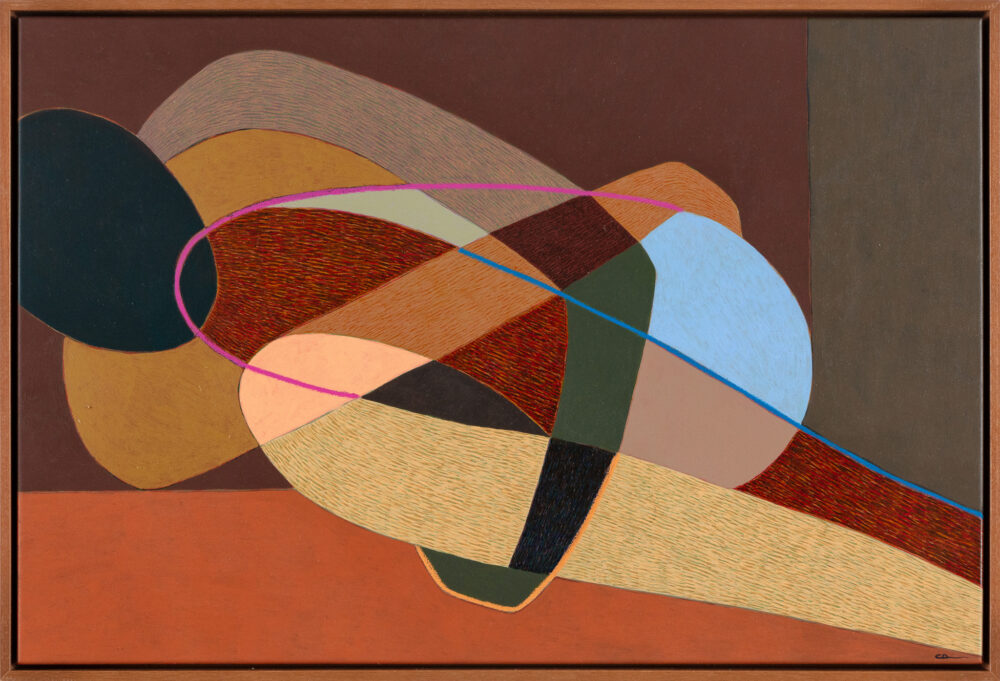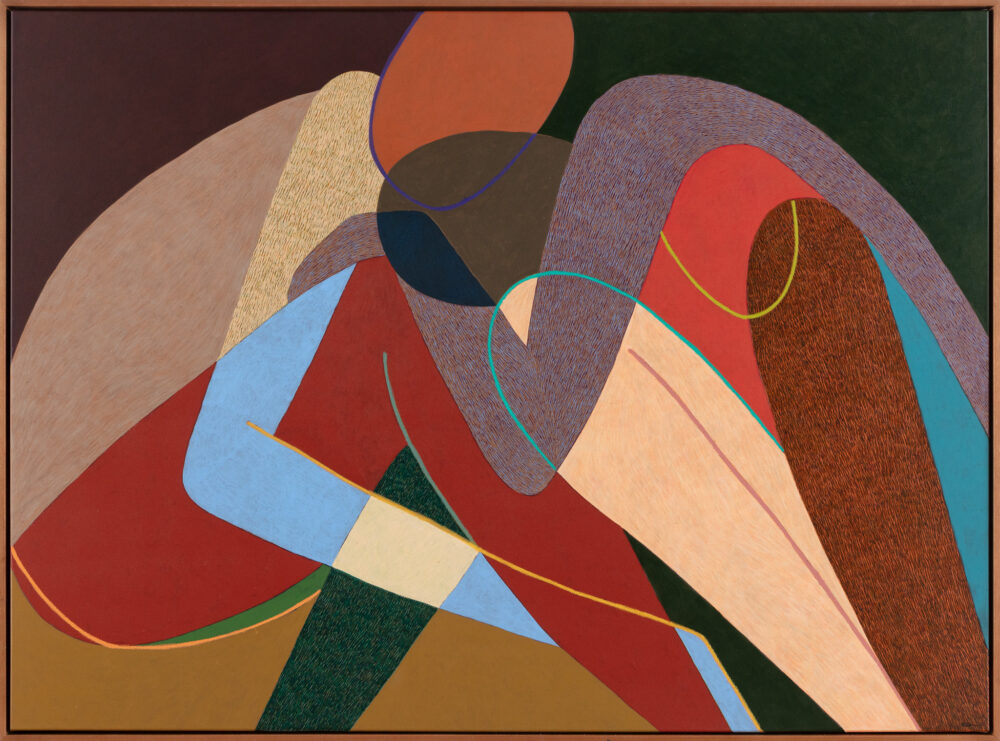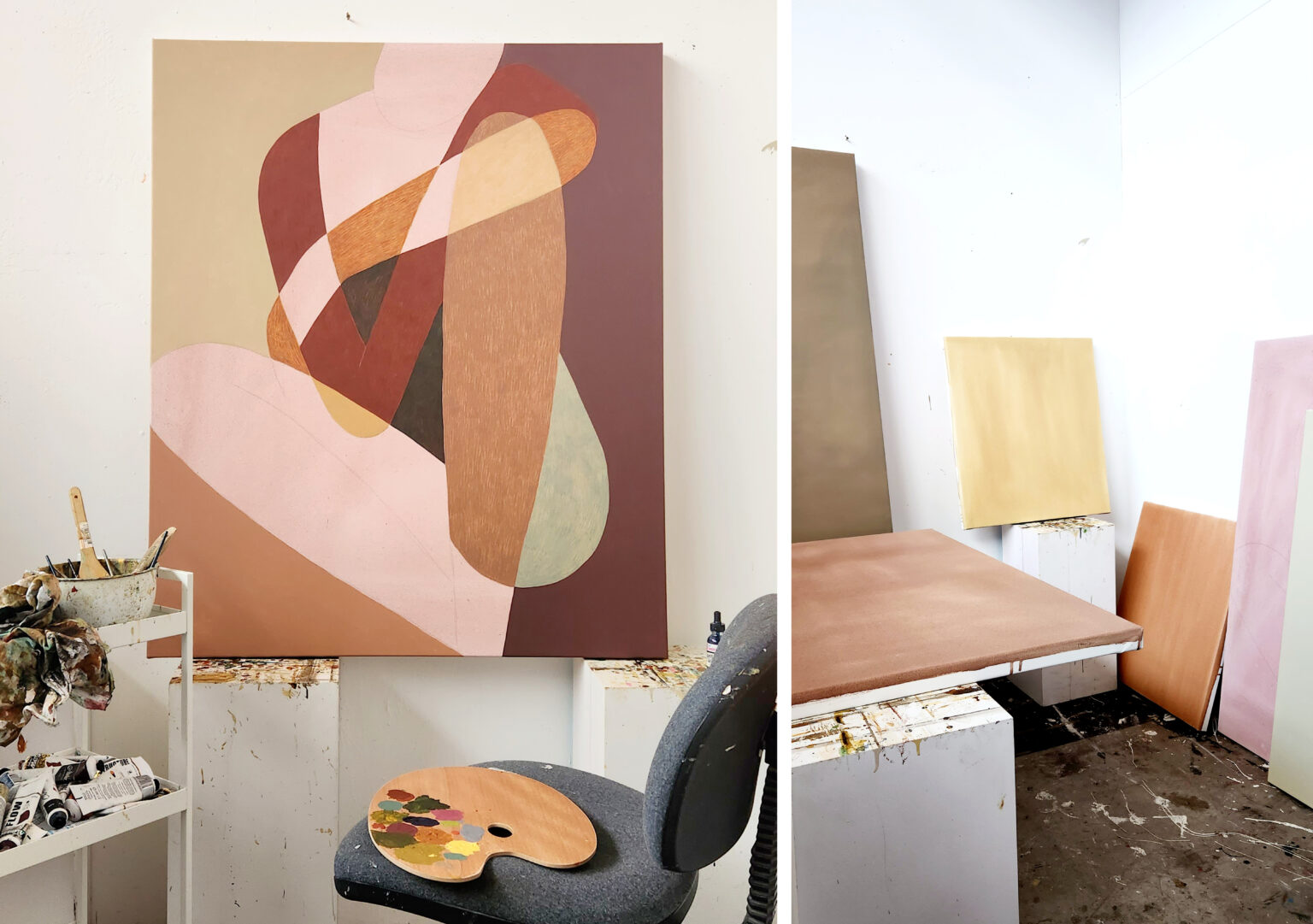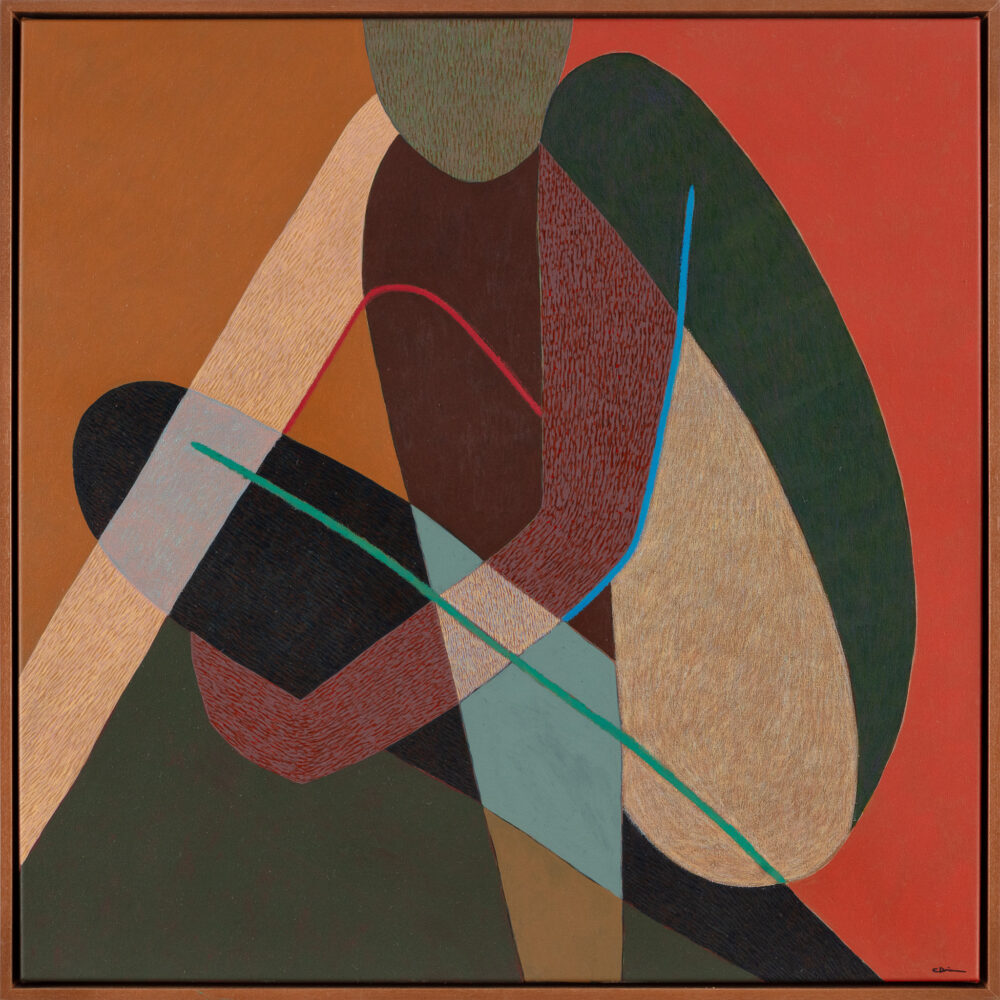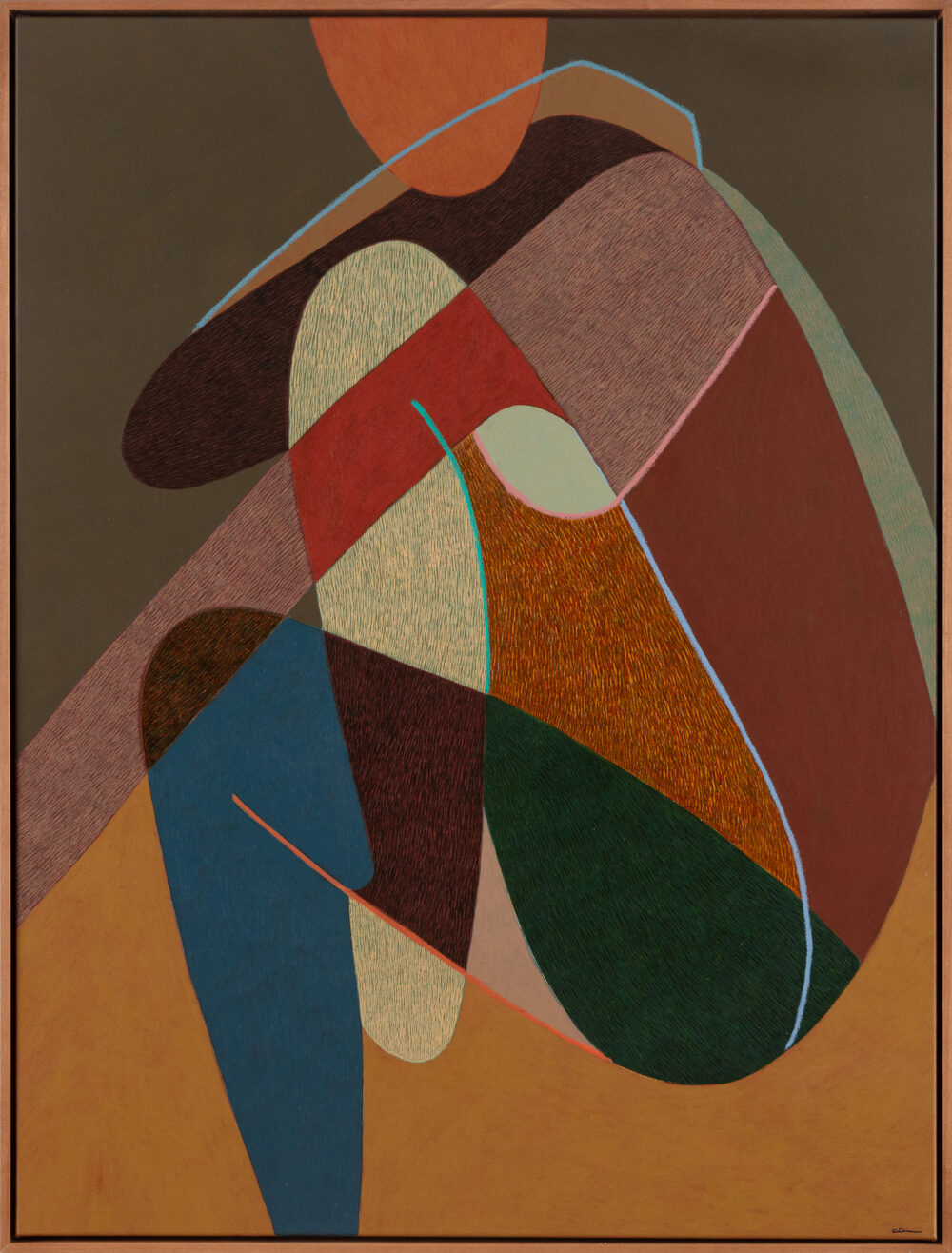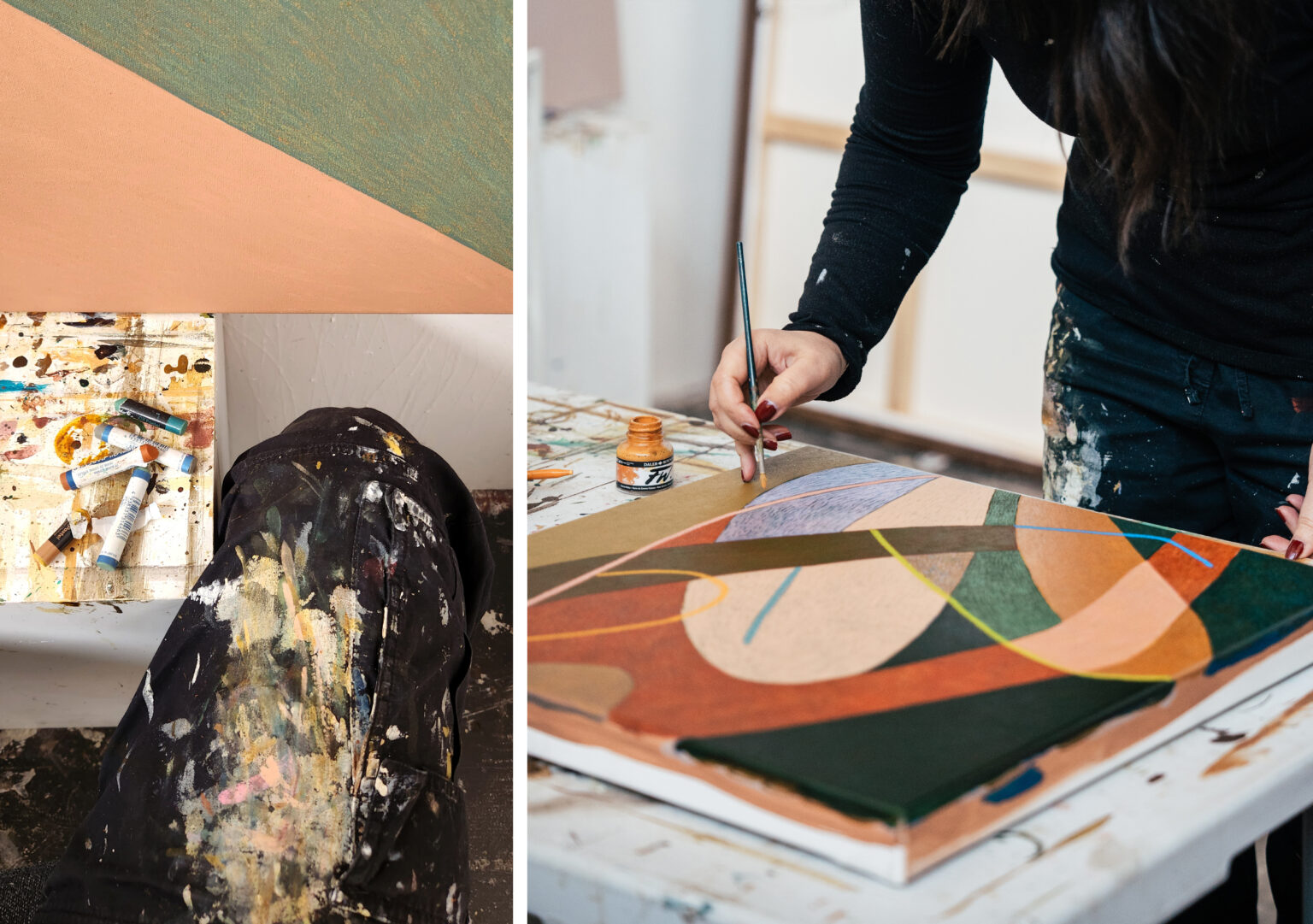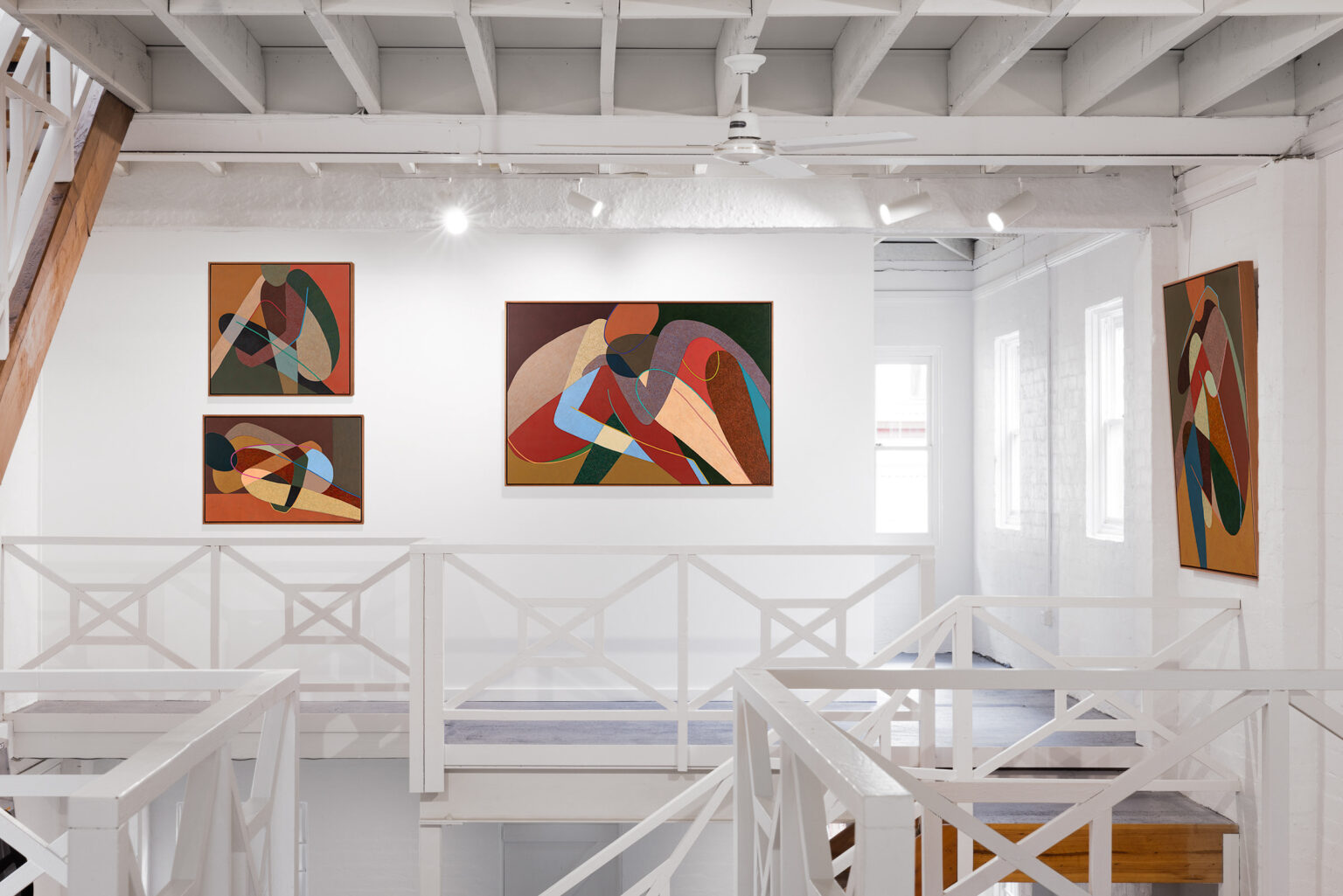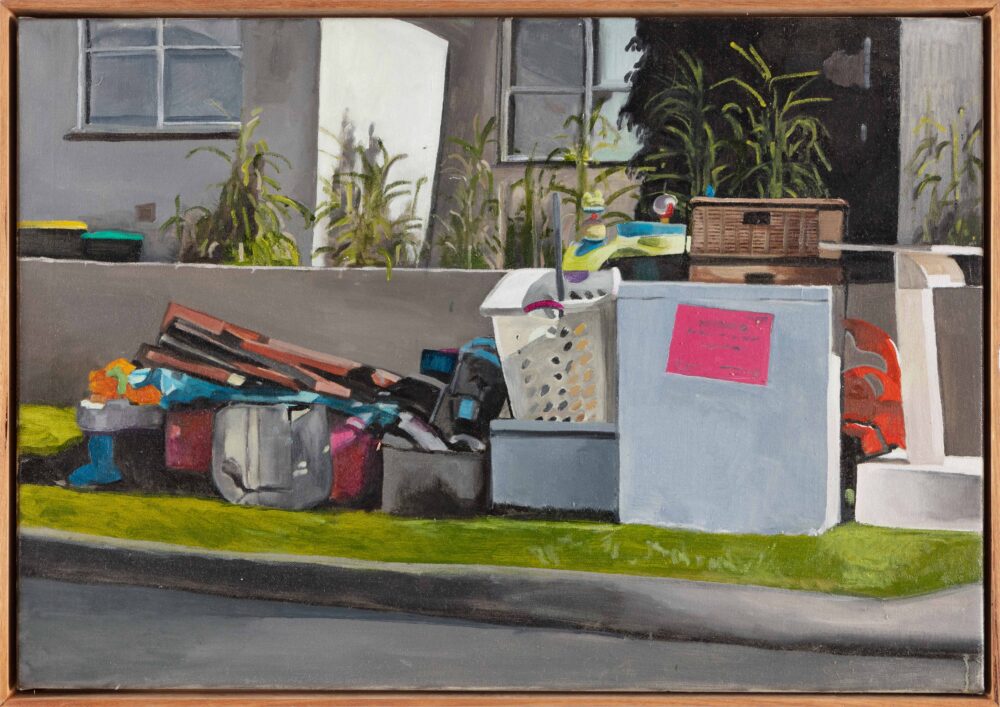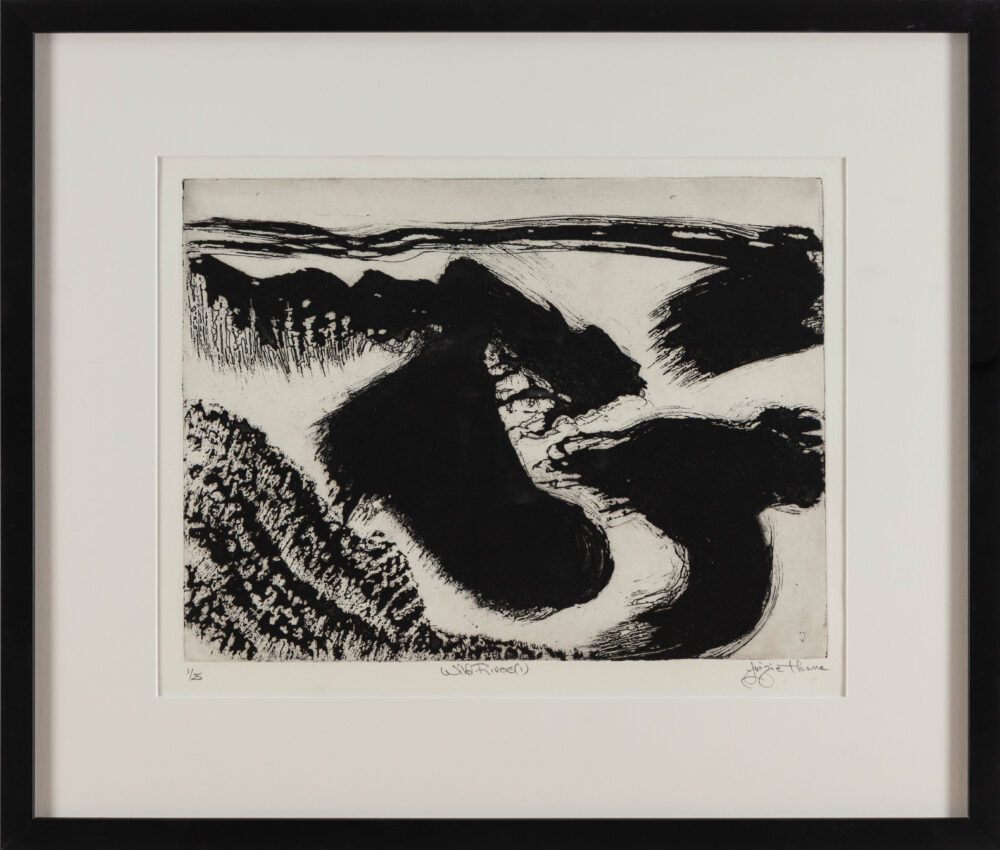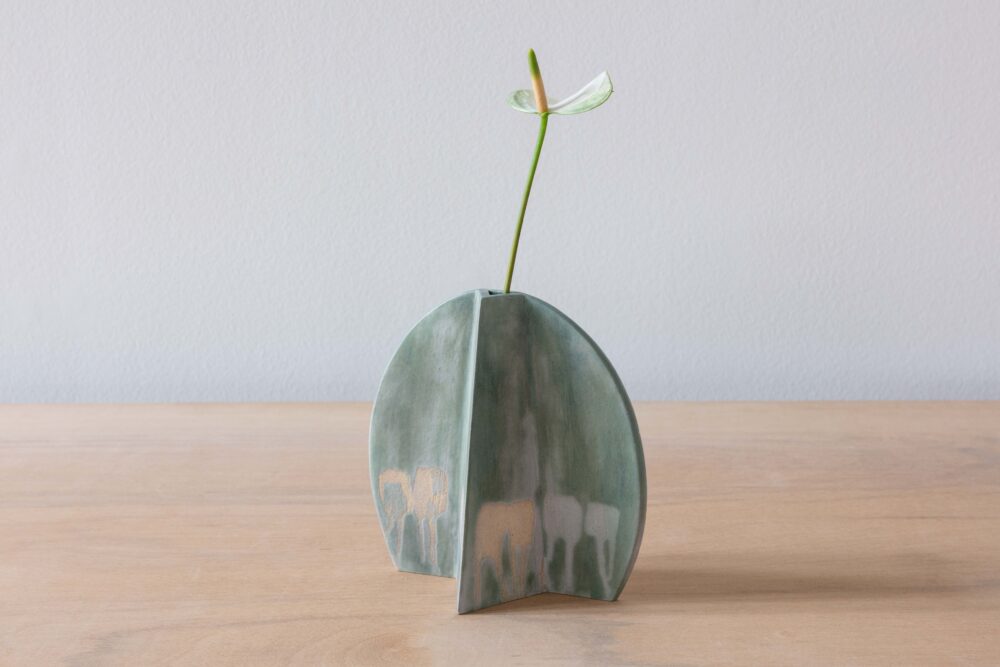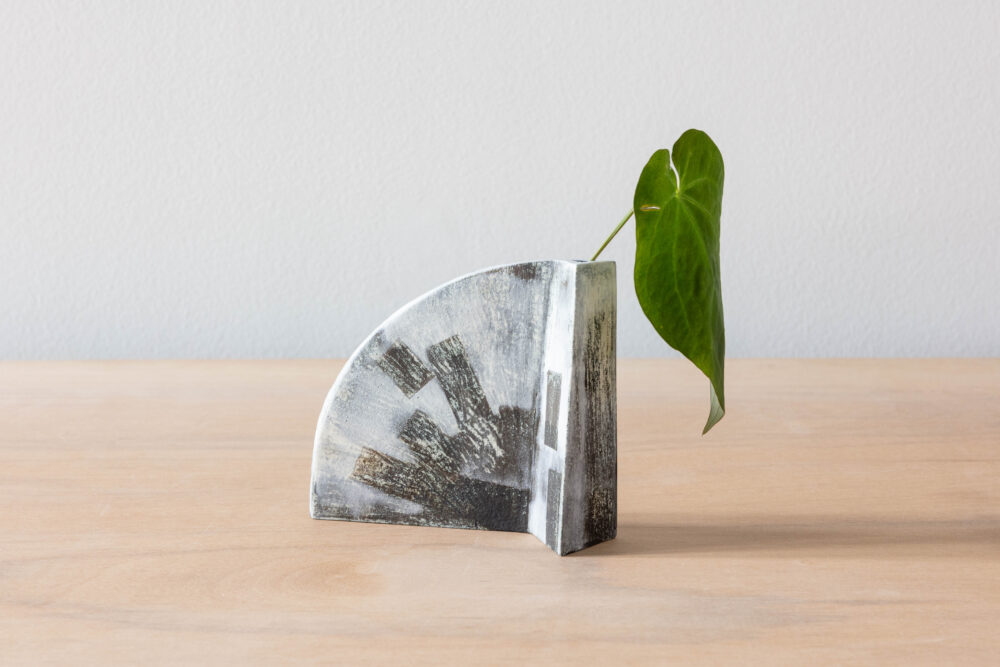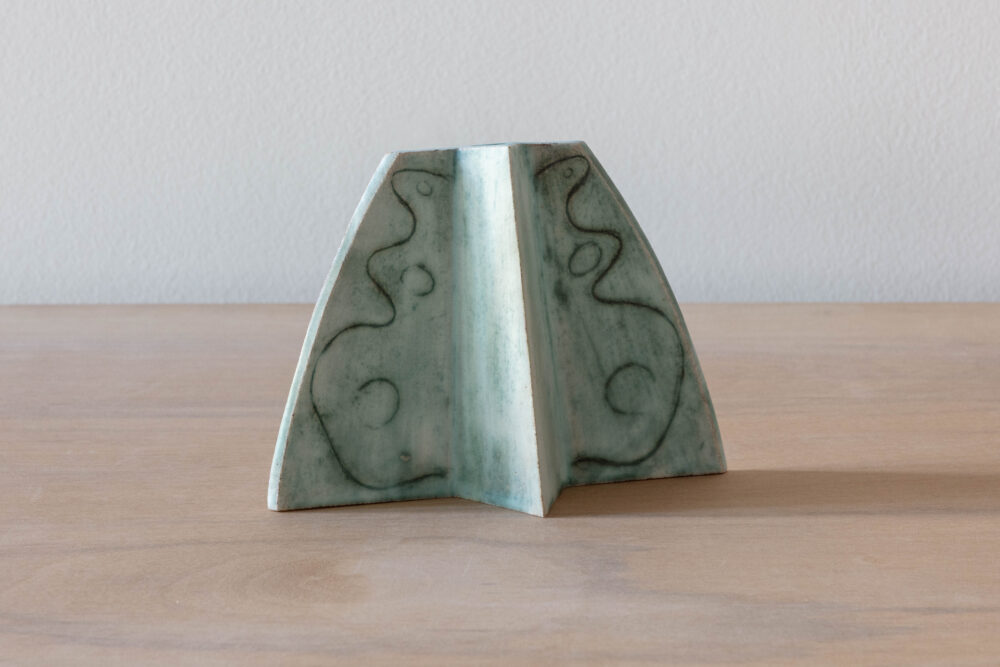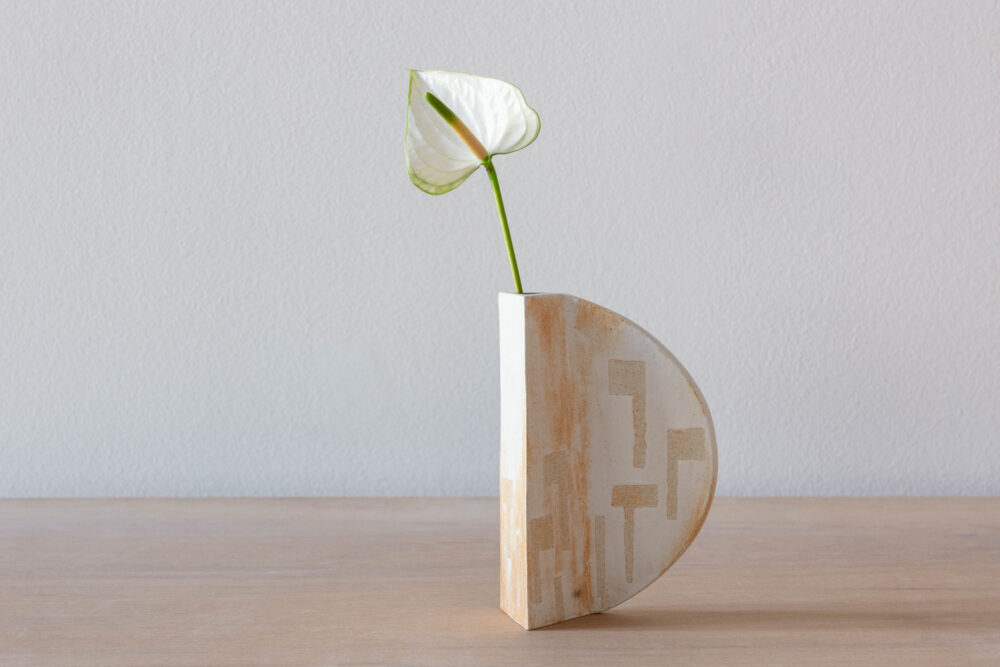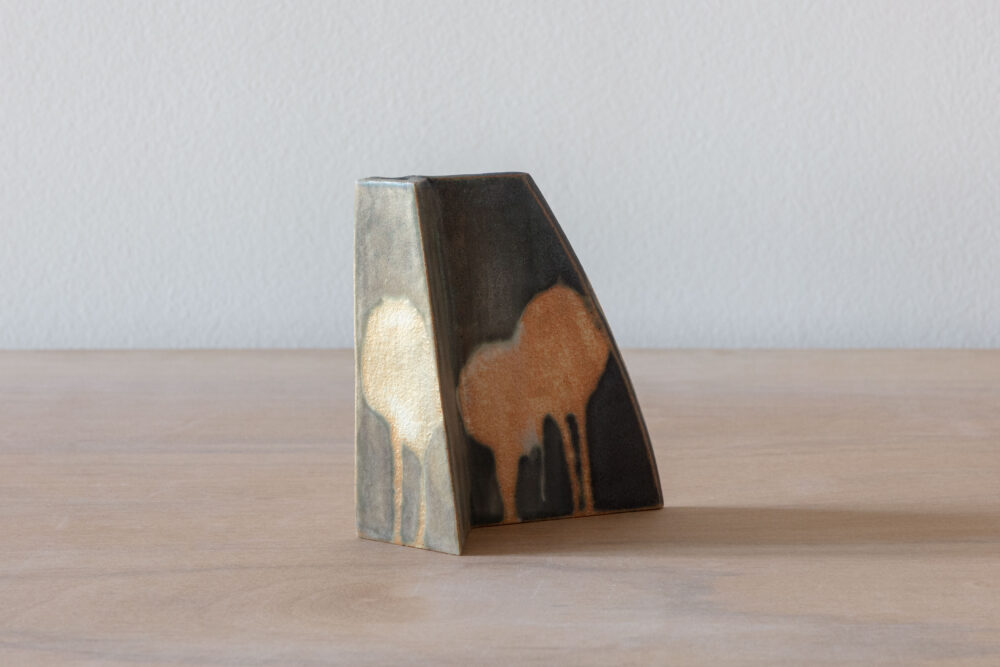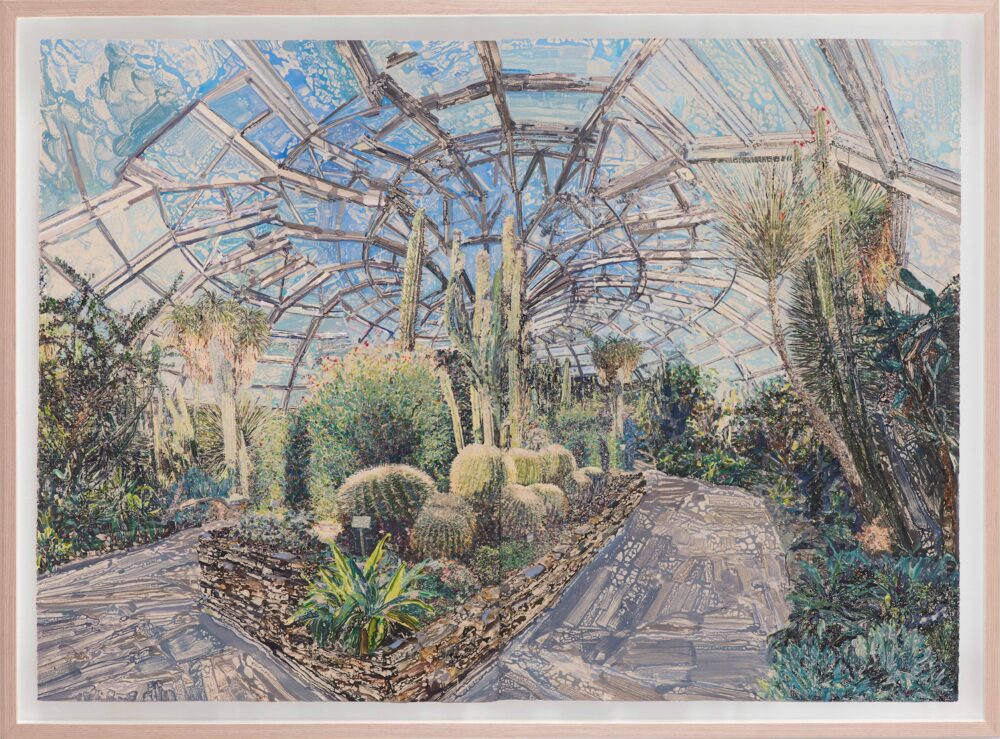Interwoven
- Julianne Ross Allcorn
- 26 Jun—20 Jul 2025
Following her celebrated Through an Artist’s Journal collection last year, Archibald and Wynne Prize finalist Julianne Ross Allcorn returns with Interwoven, a body of work that delves deeper into her lyrical connection with the Australian bush. Much like an orchestra, the bush comes alive in her paintings. Each work captures part of its score, an interplay of colour, texture, and light.
Ross Allcorn’s creative process is rooted in the countless hours she spends sketching and writing in the field, carrying her notebook to record the rhythms of nature. She draws inspiration from the flora and fauna of the Burralong Valley and Lower Hunter, as well as her Garden Studio in Roseville, where the bushland surroundings continue to inform her work.
Artist quotes with asterix and all studio imagery courtesy of Southern Wild Co and Jessica Bellef

“There’s perspective in my drawing, but there’s no perspective at the same time,” she explains. “I would like the viewer to go on a journey with me. If someone asks me about the work, I often say stay in front of it for a few minutes and look at everything at once, the colours, the way the foliage is moving, the birds. And then close your eyes, and listen for what you saw. You know you are in the landscape because you’ve looked and focused. You will find yourself trying to recreate what you would hear if you were walking through it.”*
Allcorn’s paintings are alive with energy and motion, where banksias, grevilleas, wattles, and gumnuts swirl in rhythmic harmon. Birds, insects, and mammals flicker into view among the layers of paint, their motion suspended as though captured mid-flight. While she is well known for her distinctive use of raw plywood, where exposed areas of timber act as quiet clearings within the rich thickets of line and colour, this exhibition also introduces an extraordinary work rendered on vintage pianola paper. The concertina of flora and fauna unfolds like a visual scroll, underscoring the musicality inherent in her compositions. Here, the perforations on the pianola paper suggest birdsong.

The Intertwined was shaped by a formative journey abroad. “This is one of the artworks created from my trip to Kenya,” she shares, “where I had the opportunity not only to go on a safari but to be invited to teach and work with young artists in the Mizizi Primary School and with young adult artists at the Uweze Art Gallery in Kibera for four days. That experience will never come again.” In these pieces, the flora and fauna of Australia and Kenya meet in layered compositions that honour endangered species from both regions.
Fragments traces a path or a journey. At a simple level, it describes a walk through the bush. More profoundly, it maps the intersection of two civilizations. “I have used iconic artefacts from both Indigenous and colonial cultures, ceramics and Indigenous vessels such as the koolamon,” she says. “The koolamon was made by an Awakabul elder for the opening and smoking ceremony of an exhibition in the Wollombi Fire Shed this year.”


Historically, archaeologists have valued artefacts like ceramic fragments for the way they illuminate civilizations. In Allcorn’s work, the broken shards represent early colonial settlers. She created her own fragments, decoupaged images with bush scenes, to form a landscape filled with dense detail. Here are close observations of the Australian bush, images of symbolic and metaphorical significance, maps, foreign ships, and the familiar flora and fauna of the Burralong Valley.
“The image attempts to describe a connection of all peoples to the land,” she reflects. “It explores an intrinsic relationship between humans and the natural world, and how powerfully the environment influences mental and physiological being. Fundamentally, I am interested in how humans understand and change the environment.”

“In a contemporary manner, Allcorn’s paintings to my eye, channel an earlier world of a more detailed observation and the Australian bush. Her paintings make use of raw plywood to create a unique negative space on which to work. The artist sketch paints in layers, sometimes panoramic in scope- but always hyper observant. From top to bottom, left to right Allcorn’s paintings read as if you are standing within a grove of native trees. In the gum trees, you see through the brush and into canopy, to witness a densely packed and active world.”
-Michael Reid OAM, 2023










